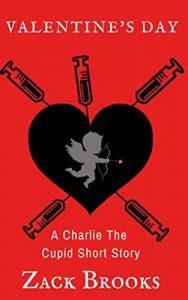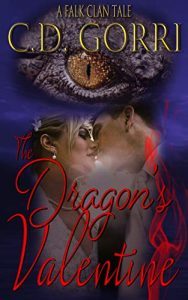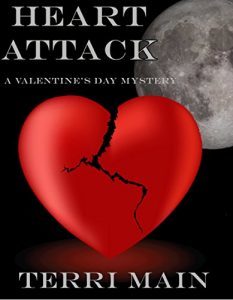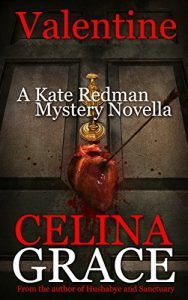Cora Buhlert's Blog, page 62
February 16, 2020
Star Trek Picard goes forth with “Absolute Candor”
It’s time for my episode by episode reviews of Star Trek Picard again. Previous installments may be found here.
In my review of episode 3 of Star Trek Picard, I said that it seems as if the set-up period was finally over and the show could get going with Picard and friends finally aboard a spaceship. However, episode 4 showed that the set-up wasn’t yet finished, as Picard makes one more pitstop to pick up the last member of the regular cast.
Warning. Spoilers behind the cut!
“Absolute Candor” starts off with yet another flashback to fourteen years prior. In the comments on Camestros Felapton’s review, Peer Sylvester says that the constant flashbacks remind him of Lost, which isn’t wrong. I’m also not sure that we need all those flashbacks, since the first two episodes already made pretty clear what happened.
This latest flashback sees Picard arriving on Vashti, a planet that serves as a hub for the Romulan relocation program. For what is essentially a refugee camp in space, Vashti looks remarkably idyllic. Picard is welcomed warmly and visits yet another never-before-seen Romulan secret society, an order of warrior nuns called Qowat Milat. The Qowat Milat follow the way of Absolute Candor, which means they are always absolutely and painfully honest, putting them at odds both with the more secretive elements of Romulan society such as the Tal Shiar and Zhat Vash as well as with the Romulans’ cousins once removed, the Vulcans with their insistence on logic and emotional suppression. The Qowat Milat are also really cool – after all, who wouldn’t love an order of bad arse warrior nuns?
In his review of this episode, Keith R.A. DeCandido says that Star Trek Picard has done more to flesh out Romulan culture than the previous 53 years of Star Trek series taken together. I certainly agree, because while the Vulcans, Klingons, Bajorans, Cardassians, Ferengi and even the Borg were fleshed out over the decades, the Romulans always remained one-dimensional bad guys. Hell, we’ve learned more about Kelpians in 26 episodes of Star Trek Discovery than we learned about the Romulans in 53 years.
The Qowat Milat have helped with the evacuation of refugees. They have also taken in Elnor, a young boy who was apparently orphaned during the evacuation. Elnor, who is clearly missing a father figure in his life, has taken to Picard. Picard is also quite fond of young Elnor. He reads The Three Musketeers to him (in an edition that’s clearly older than Patrick Stewart himself and by the 25th century is as old as the 16th century magazine that I once held in my hands in the Bremen university library) and also practices fencing with sticks. Those scenes are sweet and the Three Musketeers reference is a bit of an Easter egg, since Santiago Cabrera, who plays Captain Cristobal Rios in Picard, also played Aramis in the BBC Three Musketeers series of a few years ago.
Nonetheless, my initial reaction when I saw Picard interacting with young Elnor and clearly enjoying himself, was, “But Picard doesn’t even like kids. He never did.” In fact, “Picard doesn’t like kids” was one of his defining bits characterisation throughout The Next Generation and something which set him apart, because very few TV or film characters, particularly not positive characters, are allowed to dislike kids, even though there are plenty of people in the real world who don’t particularly like children and nonetheless manage not to be villains. Of course, Picard did interact with children aboard the Enterprise at several points and he did come to like at least Wesley Crusher, but he prefers to avoid contact with children and that’s fine. And indeed, one of the nuns even mentions that Picard does not like children. Which makes Picard’s obvious fondness of young Elnor an even more puzzling piece of inconsistent characterisation. Maybe Picard mellowed with age. Or maybe Elnor is the new Wesley, one of the few kids Picard does like.
At any rate, his sojourn with the Romulan warrior nuns and their young charge is cut short, when Picard receives a call informing him about the android attack on Mars. “But what will this mean for the evacuation?” several Romulans ask him. Picard assures them that nothing will change and gives them his word. We all know how that turned out.
And now, fourteen years later, Picard returns to Vashti, because he believes that a Romulan warrior nun will be an excellent addition to his little adventuring party. His former aide and disgraced Starfleet officer Raffi Musiker is not at all pleased that Picard wants to go to Vashti and accuses him that the boy is the true reason he wants to go back. Raffi also berates Cristobal Rios for taking Picard to Vashti by reminding Rios that he still is the captain of the ship (which gains a name, La Sirena, in this episode) and that he also isn’t a member of Starfleet anymore and doesn’t have to take orders from Picard. And indeed, it is a recurring motif throughout this episode that even though Rios is nominally the captain of the La Sirena, he still follows the orders Picard can’t resist giving, though he usually apologises afterwards.
Picard beams down to Vashti alone, which is clearly not a good idea, and finds the place changed. For starters, what was supposed to be a temporary settlement is now the permanent home of the Romulans who have been left hanging when the Federation cancelled the evacuation program. Vashti is also run down and beset by bandits and neither Starfleet nor a group calling itself the Fenris Rangers can do much about it. Furthermore, the Romulans have been infected by the same xenophobia and isolationism virus that also infested the Federation. And so the café, where Picard was once welcomed so warmly, now bears a sign saying “Romulans Only” in English. I’m not quite sure why they need it, since we don’t see any humans or other races on Vashti.
Picard pays a visit to the Qowat Milat who are actually pleased to see him for a change. He also meets Elnor again, who is all grown up now (and now played by Evan Evagora) and looks as if he’s auditioning for a part in Lord of the Rings (and indeed, I keep typing his name as Elrond). Unlike the rest of the Qowat Milat, Elnor is not happy to see Picard, understandably so, because Picard promised he’d come back and then never did. The question is, just why did Picard never return to Vashti until now? Even after he quit Starfleet, Picard could have gotten on a ship (we hardly ever seen human civilian space travel in Star Trek, but it must exist) and travelled to Vashti to explain what happened. And in fact, many of the problems in this episode could have been avoided, if Picard had gone back to Vashti to explain. As for Elnor, Picard could have taken him to Earth. Chateau Picard is a nice place for a kid to grow up, Elnor could have had a kitten of his own (he laments at one point, that he has never seen a cat), Lharis and Zaban (who sadly don’t appear in this episode) certainly wouldn’t have minded having someone else to fuss over and Picard himself probably would have been happier with more company as well. Last episode, we learned that Picard pretty much abandoned and ignored Raffi, after he left Starfleet, and now we learn that he did the same to Elnor. It almost seems as if Picard buried himself in his vineyard and waited to die, until Dahj showed up and woke him up. Okay, so he did take in Lharis and Zaban, but then I suspect that Lharis and Zaban were simply too stubborn to leave, when Picard ignored them. Nonetheless, Picard burying himself is at odds with the person we watched over seven seasons of Star Trek: The Next Generation. In the other hand, Jean-Luc Picard has always been chronically unable to be happy, so maybe his behavious after he was forced out of Starfleet, the only thing that ever mattered to him, does fit.
The head nun, meanwhile, has the splendid idea to pair up Picard and Elnor, because a) they already know and like each other, b) Elnor doesn’t belong with the Qowat Milat anyway and c) Elnor has had Qowat Milat training and should be more than sufficient for what Picard needs. I also have the sneaking suspicion that the nun planned to persuade Picard to take in Elnor all along, only that she had to wait fourteen years to implement that plan. So Picard approaches Elnor and tells his story, only to be rebuffed, when Elnor tells him quite rightly that Picard abandoned him and only came back when he needs help.
So Picard leaves the Qowat Milat and decides to pick a fight with some Romulans by deliberately pulling down the sign outside the café that says “Romulans only”, stepping on the sign and then walking into the café asking for something to drink. A Romulan confronts him and tells him that he and Picard met before, when he was a Romulan senator and listened to Picard promising that Starfleet would help the Romulans. The Romulan ex-senator is also understandably pissed that none of that ever came to pass and he isn’t interested in Picard’s apologies either, thank you very much. Instead, he wants to fight and tosses Picard a sabre.
Picard’s behaviour in this scene doesn’t really fit the Jean-Luc Picard we know either, because he doesn’t normally go around deliberately provoking people who have good reason to want to see him dead. That’s more Kirk’s style and even Kirk usually has more sense than that. Okay, so Picard did deliberately provoke some aliens who stabbed him in the heart as a young cadet, but I’d hope that 80-year-old Picard would be more mature than 18-year-old Picard. Of course, Picard’s erratic behaviour might be an early symptom of the dementia he was warned about two episodes ago. And since Sir Patrick Stewart, the person who knows the character better than anybody else, had the right to veto anything he felt did not ring true, we assume that there is a reason for his flat out strange behaviour. Never mind that Picard quite often behaved like a jerk back in the Next Generation days, as Ani Bundel points out at SyFy Wire. However, most of us have banished the bad early episodes (and bad later episodes) of The Next Generation from our collective consciousness, so we only remember the Picard who always did the right thing.
Or maybe the swordfight with the Romulan ex-senator only exists to give Sir Patrick Stewart the chance to show off his swordfighting skills for the second time in this episode. But while Picard may be a fine swordsman, the Romulan is younger, stronger and angrier, so Picard is outmatched. But then Elnor shows up, rescues Picard, gives the Romulan ex-senator a chance to surrender and when the ex-senator refuses, Elnor chops his head off. This royally pisses off the other Romulans, but before they can attack, Picard and Elnor are beamed back aboard the La Sirena. Picard berates Elnor that chopping off heads is absolutely not acceptable, but the crew of the La Sirena have bigger problems than a headchopping happy Romulan warrior monk (who, it turns out, joined the quest for Soji, because the Qowat Milat only pledge their sword to lost causes, which bodes well for the future).
Because one of the bandits harrassing the people of Vashti has dropped by complete with an ancient Romulan Bird of Prey (nice seeing one of those again still looking like they always did) and is firing on the La Sirena. And so we get treated to a nice space battle, complete with everybody shaking and tossing about in their seats just like in the old days. We also meet another of Captain Rios’ holograms. This one is his gunner who looks like the tattooed bad boy hero of a motorcycle club romance and speaks only Spanish. Santiago Cabrera clearly has a lot of fun playing all these different versions of the same character, complete with different languages and accents. Camestros Felapton points out in his review that we’ve never seen Rios Prime outside his ship either, so maybe he is a hologram as well. It would certainly be an interesting twist.
The Bird of Prey may be ancient, but it still has the La Sirena outgunned, until a mystery ship shows up to blast the Bird of Prey out of orbit. However, the mystery ship is fatally damaged in the process, so the La Sirena crew beam the pilot aboard, only to realise that it’s none other than Seven of Nine. Cue end credits. Of course, what would have been an absolutely brilliant cliffhanger was somewhat spoiled by listing Jeri Ryan as a guest star in the title credits, but it’s still nice to see Seven of Nine back.
Meanwhile, back at the Borg cube, Soji is still somewhat shaken from her encounter with deborgified Romulan anthropologist Ramda and decides to find out more about the term Ramda called her, the Destroyer. What she finds is an old interview with a pre-Borg Ramda who explains that the Destroyer is a pivotal figure in some kind of Romulan End of the Universe myth. So now poor Soji is not just an illegal android, she’ll also bring about the end of everything.
Narek shows up and tells Soji that Ramda was never quite right, even before she was turned into a Borg. He then tries (and succeeds) to distract Soji by sliding across the particularly smooth floor in a specific section of the Borg cube. It’s a genuinely sweet moment and once again, we wonder whether Narek is just playacting or whether he is beginning to develop genuine feelings for Soji. Meanwhile, Soji has been wondering about Narek as well. He wears no uniform and no insignia and yet he can go wherever he pleases aboard the Borg cube. “Are you Tal Shiar?” she asks him point blank. “No”, Narek replied and while we know that he’s telling the truth, because he is not Tal Shiar but Zhat Vash, Soji does not. And so she asks him if he can get her some classified information about Ramda and how she was assimilated. Narek says that he doesn’t have that information, but might know someone who does.
That someone is obviously is sister Narissa, who pays Narek a visit, once Soji has stormed off after a quarrel. Once again, Narissa displays some seriously creepy incest vibes, though Narek does try to push her away. He also assures her that he is working to get Soji to tell him where “the others” are (so there are more organic androids?), but he’s doing it his own way. Narissa, meanwhile, is doubtful how committed Narek still is to the cause and chokes him until he calls Soji “the Destroyer”.
In Anglo-American pop culture, incest seems to have become something of a shorthand for “seriously twisted villain”. Come to think of it, incest has been used in that way for a long time now – the central mystery in the 1974 neo-noir movie Chinatown is John Huston committing incest with Faye Dunaway and then there is the incest in the 1979 gothic thriller Flowers in the Attic and its sequels by V.C Andrews. But in recent years, the use of incest as a shorthand for villain has really exploded in Anglo-American pop culture. Meanwhile, “incest” shows up comparatively rarely in German pop culture, probably many of us have had dreadfully dull literary treatments of incest such as Wälsungenblut by Thomas Mann and Homo Faber by Max Frisch (or, if you were unlucky like me, both) shoved down out throats in German class. That said, using incest as a way to characterise a character/characters as evil annoys me, because in the real world, incest is almost always a tragedy and either involves sexual abuse or – when happening between consenting adults – it’s usually a case of blood relatives being separated early and meeting only as adults and connecting to each other in the wrong way.
Also, the incestous vibes between Narek and Narissa are entirely unnecessary, because the story would have worked just as well, if she were simply his Romulan ex, who also happens to be a fellow Zhat Vash agent. There was absolutely no need to make them siblings. Never mind that we’re not even sure if incest is as strong a taboo among Romulans as it is among humans.
One thing that all reviewers agree upon is that Star Trek Picard moves very slowly. We’re almost at the halfpoint of the ten-episode season now and Picard has only just assembled his crew. In fact, “Absolute Candor” could have been eliminated entirely, if Elnor had been introduced as living at Chateau Picard either as a refugee kid adopted by or a biological kid of Lharis and Zaban or maybe a nephew they call in to help. He could still be a martial arts bad arse – after all, Lharis and Zaban are both pretty formidable themselves. Never mind that it’s pretty obvious that the Romulans will be pissed at Picard and Starfleet’s failure to help them. We didn’t need a swordfight with a disgruntled ex-senator to prove it. And while I like Soji and Narek, considering how long their subplot has been going on now, I question the decision to have them fall into bed between the first and second episode. Sometimes, a slow-burn romance can work much better and it’s not as if they didn’t have time to develop the relationship. In fact, as things are now, I strongly suspect that Picard will pull a Witcher and only have Picard and Soji meet up in the final episode, maybe even only the final scene.
But even though Star Trek Picard moves at glacial speed, the series is entertaining and I have been enjoying every episode so far. It’s only when I sit down to write these reviews that I realise that very little actually happened in the episode I just watched. Still, hopefully the actual plot will start next episode.
 Send to Kindle
Send to Kindle
Retro Review: “Undersea Guardians” by Ray Bradbury
[image error]“Undersea Guardians” by Ray Bradbury is a horror short story, which appeared in the December 1944 issue of Amazing Stories and is therefore eligible for the 1945 Retro Hugos. The magazine version may be found here. This review will also be crossposted to Retro Science Fiction Reviews.
Warning: There will be spoilers in the following!
“Undersea Guardians” starts with the atmospheric description of the wreck of a sunken ship, the U.S.S. Atlantic, lying on the ocean floor. Soon thereafter we meet a group of what initially seems to be merpeople, led by a man called Conda. The group of merpeople also includes several woman, a brunette called Alita and a blonde called Helene as well as an old woman who never gets a name and clearly has maternal feelings towards Alita.
The swarm of merpeople is scattered, when “a shadow crosses the ocean surface, quick, like a gigantic sea-gull.” The shadow is an airplane and it drops a depth charge, which is our first hint that this is a contemporary set story, taking place during World War II.
Alita is stunned by the explosion and just wants to sit on the ocean floor, but the others urge her onwards, because they have sighted a German submarine and they have work to do. After all, a US Navy convoy will soon pass by and the German submarine is lying in wait for them.
Gradually, it emerges that Conda, Alita and the other merpeople were aboard the U.S.S. Atlantic, when she was torpedoed and sank. But they had unfinished business, so they did not die, but instead lived on as merpeople. In Alita’s case, that unfinished business is her love for a Navy seaman named Richard Jameson, of whom she sometimes catches a glimpse, when his ship passes the spot where the U.S.S. Atlantic sank.
Conda, who in life was the captain of the U.S.S. Atlantic, and his squad of undead have made it their mission to take out German submarines. They use Alita and Helene, two young, attractive and most importantly naked women, as bait to seduce the crew of the submarine. Though at least in Alita’s case, Schmidt (of course, he’s called Schmidt, being a crewman aboard a German submarine), the poor crewman who happens to see, her believes he’s gone mad from weeks underwater and runs screaming through the submarine and tries to climb out of the hatch. The rest of the crew valiantly try to stop him but fail, since their aim is about as bad as a Stormtrooper’s. But then this is a WWII story written by an American author, so you cannot have competent German sailors.
Now Helene, Conda and the rest get into the submarine via the open hatch and proceed to wreak havoc. Alita doesn’t participate – she clearly dislikes violence. Unlike Helene, who is clearly a mermaid femme fatale driven by hatred, because her lover died inside the U.S.S. Atlantic, while Helene did not. The old woman tells a distraught Alita that yes, they did to the submarine crew what was done to them, but they had to do it, because they saved hundreds of lives. Apparently, the lives of American sailors are the only lives that count.
They are guardians, the old woman says, guardians protecting American ships and convoys. That is why they survive as undead and murderous merpeople, while everybody else aboard the Atlantic died. Because they all have loved ones – husbands, lovers, father, brothers, sons – who are sailors aboard US Navy ships and therefore targets.
The convoy passes by and the destroyer aboard which Richard serves is part of it. Alita flits around the destroyer, trying to catch a glimpse of her lover, when another German submarine appears. But the convoy and Conda and his band of murderous merpeople get lucky, because the crew of this German submarine are crap shots, too, and so their torpedoes keep missing the convoy that is right in front of them.
But the submarine crew finally get their act together and the last torpedo is going to hit the destroyer with Richard on board. But Alita heroically throws herself in the way of the torpedo, sacrificing her not-life to save Richard and the destroyer.
On the bridge of the destroyer, Richard briefly thinks that he saw something just before the torpedo exploded harmlessly. A large fish or maybe a log.
[image error]Of the four Ray Bradbury stories I reviewed for the Retro Reviews project so far, I liked “Undersea Guardians” the least. It’s an effective little story and – like all Ray Bradbury stories – well written and atmospheric. But I prefer my speculative fiction without a side order of WWII propaganda, thank you very much.
Though to be fair, Alita has her doubts about what she and the other merpeople are doing and is clearly aware of the hypocrisy of condemning others to a fate she so clearly loathes. And indeed, Alita repeatedly has to be coaxed into participating in the raids by the old woman, who never even gets a name. Furthermore, Helene, the mermaid femme fatale, is clearly insane. And Schmidt, the hapless German sailor who happens to spot Alita, is not a xenophobic caricature, just a young man driven nigh crazy from months of isolation. Compared to some of the truly grisly propaganda stuff we’ve seen in the dramatic presentation and graphic story categories at the Retro Hugos in recent years, “Undersea Guardians” is pretty nuanced.
There are also moments where it seems as if Bradbury is aware of the implications of his premise. For if the crews of allied ships survive as murderous undead merpeople bent on revenge, then so should the crews of German ships, which would soon lead to groups of merpeople waging war on each other under the sea. The ambivalence of the story almost suggests that the editor of Amazing Stories, Raymond F. Palmer, pushed Bradbury to make it more patriotic.
And while it’s never explicitly stated, the U.S.S. Atlantic was not a civilian ship, but a US Navy vessel, which makes her a legitimate target in wartime. Alita apparently was on board, because she wanted to work as a nurse in England and see her Richard again. We never learn what Helene and the old woman were doing aboard. Most probably, they were planning to become nurses, too. So what happened to Alita and the others was not some kind of Lusitania, let alone Wilhelm Gustloff incident.
That said, I was pleased that “Undersea Guardians” has three female characters, two of them named, and all of them different from each other. In fact, “Undersea Guardians” is the only story I have reviewed for the Retro Reviews project so far that passes the Bechdel test.
This is the third 1944 Ray Bradbury story I’ve read where a non-combatant saves the day and wins the battle, if not the war. Sam Burnett from “Morgue Ship” is a medic collecting dead bodies after the battle, Click Hathaway from “The Monster Maker” is a news photographer who only tagged along with an Interplanetary Patrolman to shoot the action and Alita from “Undersea Guardians” is a wartime nurse turned undead mermaid. Methinks Bradbury was trying to make a point about the heroic potential of non-combatants.
Ray Bradbury would revisit the concept of drowned sailors turned into a vengeful undead army two years later in “Lorelei of the Red Mist”, his sole collaboration with lifelong friend Leigh Brackett. Only that in “Lorelei of the Red Mist”, the undead army consists of sailors from both sides of a local conflict on Venus and that they turn on their own side as well as the enemy, led by a sinister pied piper figure. And the undersea army of the undead only shows up towards the end of “Lorelei of the Red Mist” and is therefore definitely Bradbury’s work, who finished the novella, when Leigh Brackett was called away to Hollywood to write the screenplay for The Big Sleep.
Soldiers continuing to fight the war they were in even after death also shows up in Richard Lester’s 1967 anti-war film How I Won the War, the climactic scene of which with the undead soldiers marching on to war was filmed near where I live with the Uesen Weser bridge standing in for a Rhine bridge, even though anybody who has ever seen either the Weser in Uesen or the Rhine knows that both don’t look even remotely the same.
Even though Amazing Stories was America’s first science fiction magazine, there is not a hint of science fiction in “Undersea Guardians”. Instead, the story is pure horror and would feel more at home in Weird Tales than in Amazing Stories. Maybe Weird Tales rejected it and since there were no other fantasy and horror magazines on the market in 1944, “Undersea Guardians” ended up in Amazing Stories and even was the cover story of the December 1944 issue with a striking (and accurate) cover courtesy of James B. Settles.
Unlike the much better “Morgue Ship”, “Undersea Guardians” has been reprinted a handful of times over the years, usually in anthologies of maritime horror. And the story is certainly a fitting addition to an anthology like that.
“Undersea Guardians” is an effective horror story somewhat marred by its WWII context. But considering how prolific Ray Bradbury was (he published thirteen speculative stories in 1944 alone plus several mysteries), they can’t all be winners. And even a weaker Bradbury is still better than most of the other SFF stories out there.
 Send to Kindle
Send to Kindle
February 13, 2020
Retro Review: “Desertion” by Clifford D. Simak
Not Fowler and Towser, but still Killdozer by Theodore Sturgeon.
“Desertion” is a hard science fiction short story by Clifford D. Simak, which was first published in the November 1944 issue of Astounding Science Fiction and is therefore eligible for the 1945 Retro Hugos. The magazine version may be found online here. “Desertion” is part of Simak’s City cycle and has been widely reprinted.
This review will also be crossposted to Retro Science Fiction Reviews.
Warning: Spoilers beyond this point!
“Desertion” is something of the odd one out in the City cycle, because unlike the other City stories, “Desertion” doesn’t take place on Earth, but on a human research station on Jupiter. Kent Fowler is head of the Dome No. 3 Jovian Survey Project and has a problem. For none of the four intrepid explorers that he sent out into the wilds of Jupiter, their bodies altered to suit the atmospheric conditions, have ever returned. And now Fowler is about to send out the fifth explorer, one Harold Allen, who most likely won’t come back either.
Fowler is not happy about this, but he feels that he has no choice but to send people out into the deadly Jovian atmosphere, because otherwise the human colonists on Jupiter will be stuck in enclosed domes that are almost impossible to maintain considered the atmospheric conditions as well as the high pressure and gravity of Jupiter. This being a hard science fiction story published in Astounding, we get a detailed description of the conditions on Jupiter with its high pressure and gravity and its corrosive ammonia rains. This being a Clifford D. Simak story, these descriptions are much better written than usual.
Miss Stanley, who is in charge of converting the explorers into their Jupiter-adapted form, is even less happy about the whole mission than Fowler and flat out accuses Fowler of sending young men to their death, while he himself sits safe in his office inside the dome, all so Fowler can become a great man, the one who opened Jupiter to human colonisation.
Miss Stanley is the rare example of an older woman character in a golden age science fiction story who is not someone’s mother, aunt or grandmother, but a highly skilled specialist (the best conversion operator in the solar system) in her own right. Miss Stanley also takes absolutely no shit from anybody, least of all Fowler. She knows a man who’s chasing glory and doesn’t care whom he sacrifices along the way when she sees one. And yes, I’m certain that it is total coincidence that the argument between Fowler and Miss Stanley about the ethics of sacrificing young men for some nebulous greater good was written towards the end of WWII, when the Fowlers of our world were sending young soldiers out to die by the thousands.
To no one’s surprise, Harold Allen does not come back, but vanishes without a trace. Fowler tries to deflect the blame onto the conversion machine and the biologists who programmed it, based on a Jovian lifeform the humans call “Loper”. But Miss Stanley declares that nothing is wrong with her machine and the biologists offer an undoubtedly lengthy explanation why their data is correct that Simak thankfully spares us.
Unlike some of the more bloodthirsty and ruthless WWII generals of the era, Fowler does have a conscience. As a result, Miss Stanley’s accusation that he is sitting there high and dry, while he is sending young men to their deaths has clearly gotten to him. Therefore, Fowler decides that the next person to go out into the Jovian atmosphere will be Fowler himself. Though he won’t be going alone. Instead, he’ll take his faithful dog Towser with him, because Fowler would feel bad about leaving him behind.
[image error]
The dog may be Towser, but the robot is definitely not Fowles on this 1971 cover of City.
And so Fowler and Towser step onto the Jovian surface in their new bodies. Fowler realises that unlike the hell world his human mind had envisioned, Jupiter is a pleasant and beautiful place, when experienced in the body of a Loper. The massive gales are a light breeze, the corrosive ammonia downpour is a light and gentle rain, the toxic atmosphere smells of lavender.
When Fowler tries to call for Towser, he realises that he’s telepathic and that he can talk to Towser now. And Towser, who’s very happy with his new body, because it is so much better than his aging dog body, can answer him.
“You’re… talking to me”, a stunned Fowler exclaims, whereupon Towser replies that he always talked to Fowler, only that Fowler could never understand him.
Fowler and Towser engage in a friendly race to an ammonia waterfall that crashes over a cliff of frozen oxygen and realise that their minds are changing as well and that they know things they never knew before about Jovian colours and how to make metal withstand the Jovian atmosphere better. “Maybe…” Fowler muses, “…humans are the morons of the universe, naturally slow and foggy.”
Fowler also realises why none of the people he sent out ever came back. Because life is simply so much better as a Loper, the surface of Jupiter is beautiful and there are so many mysteries to explore.
Towser declares that he won’t go back, because they would only turn him into a dog again. Fowler pities the people in the dome who have no idea how wonderful life as a Loper really is. But he also realises that he couldn’t live in his old human body anymore, not even for a short while, because its limitations would simply be too much to bear, now he knows how much better life can be.
And so Fowler and Towser head off into the sunset (or the Jovian equivalent thereof) to have amazing adventures on Jupiter, while back at the dome, Miss Stanley and the others wonder what happened to them.
[image error]
This might be Fowles and Towser on the cover of the 1952 Gnome Press edition of “City”.
For some reason, I haven’t read much of Clifford D. Simak. At least based on “Desertion”, I should probably remedy that, because “Desertion” is a wonderful story. It’s also that rare beast, a hard science fiction story published in Astounding that manages not to be clunky and filled with infodumps and exposition, but beautifully written. And “Desertion” absolutely is hard science fiction based on what was known about Jupiter at the time, even if the conversion machine is very much handwavium.
In fact, I was stunned that “Desertion” (and the other City stories, for that matter) was published in Astounding, because even though it is hard science fiction, “Desertion” is not at all what you’d expect to find in Astounding and not just because it is better written than approximately ninety percent of the other stories in the magazine. No, “Desertion” also violates John W. Campbell’s famous dictum that humans must always triumph. Because the humans in “Desertion” are not superior at all. Instead, they are small-minded, blinkered and – to quote Fowler – “the morons of the solar system”. Even a random Jovian critter the Earth scientists are not even sure is intelligent is superior to humans.
Add to that Miss Stanley (who’s awesome, by the way, and who I hope gets a Loper body and great and glorious adventures of her own) blatantly criticising men (and they almost always are men) sending out others to die, just so they can make their mark in the world, and I honestly wonder how on Earth this story came to be published by John W. Campbell in Astounding? Was Campbell too busy writing manuals for sonar systems or annoying the FBI that month, so that his assistant Kay Tarrant (who according to contemporary accounts had more than a little of Miss Stanley in her) took over and picked this one out of the slush pile? On the other hand, as I’ve noted before, John W. Campbell published quite a lot of stories that were a far cry from what we now consider Campbellian science fiction.
Stylistically, Simak is much closer to Ray Bradbury as well as Leigh Brackett and C.L. Moore’s solo works than to Isaac Asimov, George O. Smith, A.E. van Vogt and the other mainstays in Campbell’s stable during the war years. And like the Bradbury stories I have reviewed for the Retro Reviews project, “Desertion” feels very timeless and with a few tweaks wouldn’t seem out of place in a contemporary issue of Lightspeed, Clarkesworld or Tor.com. But unlike the various Bradbury stories, “Desertion” is hard science fiction, which usually dates much worse than softer science fiction or outright fantasy.
A beautiful story about friendship, dogs and what it feels like to be alive. Highly recommended.
 Send to Kindle
Send to Kindle
Love Through Space and Time 2020 – A Round-up of Indie Valentine’s Day Speculative Fiction
Our monthly round-ups of new speculative fiction and new crime fiction releases by indie authors are a perennially popular feature. Therefore, we now offer you a round-up of our favourite Valentine’s Day science fiction, fantasy and horror by indie authors.
These Valentine’s Day stories cover the broad spectrum of speculative fiction. We have urban fantasy, a lot of paranormal romance, paranormal mysteries, science fiction mysteries, science fiction romance, space opera, space colonisation, horror, alternate history, time travel, dragons, werewolves, wizards, ghosts, demons, aliens, robots, magical greeting card writers, crime-fighting witches, crime-fighting ghosts, Viking ghosts, dinners with demons, grumpy cupids, love potions, Valentine’s Day in space and much more. But one thing unites all of those very different books. They’re all set on or around Valentine’s Day.
As always with my round-up posts, this round-up of the best indie holiday speculative fiction is also crossposted to the Speculative Fiction Showcase, a group blog which features new release spotlights, guest posts, interviews and link round-ups regarding all things speculative fiction several times per week.
As always, I know the authors at least vaguely, but I haven’t read all of the books, so Caveat emptor.
And now on to the books without further ado:
 Dinner With a Demon: It’s Valentine’s Day After All by Iokasti Argiriou
Dinner With a Demon: It’s Valentine’s Day After All by Iokasti Argiriou
Apparently it’s Valentine’s day. A day dedicated to love? What in Aphrodite’s name is happening?
Anath – or Leda to Persa as she always refuses to call her by her demonic name – approaches Persa after all this time and she chooses this specific day. Is it a coinsidence? And then, out of the blue, the strangest thing happens. She asks Persa out on a date. A real date.
Ok, it was Persa’s suggestion, actually, but she never thought that Leda would go along with it. Now Persa cannot bow out and…she really hopes that this Valentine dude knows what he’s doing. Please, don’t let him be a sham!
She is an alien with silver-blue skin and a sexy tail, he is human and sometimes she doesn’t quite understand his customs. Like that strange human event of Valentine’s Day. He has something special planned for that day and it involves Zero G. But maybe he hasn’t quite thought this through. Sex in Zero G has some unique challenges.
This short story has previously been published in 2017 as part of the “Red Hots” anthology, which has been unpublished.
 Valentine’s Day: A Charlie The Cupid Short Story by Zack Brooks:
Valentine’s Day: A Charlie The Cupid Short Story by Zack Brooks:
Meet Charles Vefflin. A cupid stuck as a drone within a corporate company run by the Fates in Boston, he is doomed to cause people to fall in love with their soulmates for all of eternity. He hates his job and most people of the world. But a job is a job, and he isn’t going to let a little thing like people ruin the few pleasures in his life.
Join Charlie on the worst day of the year, Valentine’s Day, where he must make a young couple fall in love at a most unconventional party. See him deal with the idiocy of his co-workers, the lunacy of humans, and even run into a perverted old god. But, one thing’s for sure, he’ll see the job through. Even if it takes some liquid courage just to get through the night.
Valentine’s day is short story, about 6,500 words or 22 printed pages
[image error] Valentine’s Day on Iago Prime by Cora Buhlert:
Kai and Maisie are about the celebrate their first Valentine’s Day on the planet Iago Prime. However, the holiday traditions they established back on Earth such as celebrating Valentine’s Day with a picnic on the beach are impossible to maintain in the hostile environment of their new home. But in spite of the many limitations imposed by living on Iago Prime, Kai pulls out all the stops to give Maisie an unforgettable Valentine’s Day.
This is a science fictional Valentine’s Day story of 2200 words or approx. 10 print pages.
 A Viking Ghost for Valentine’s Day by Jo-Ann Carson:
A Viking Ghost for Valentine’s Day by Jo-Ann Carson:
To feed her three children, Widow Abigail Jenkins takes the only job available in Sunset Cove: night cleaner in the notorious, haunted tea-house. She figures the wild, supernatural rumors about the place are pure fiction. After all, ghosts don’t exist.
Eric Eklund a sexy spirit from Sweden is over a thousand years old. Having missed his chance at Valhalla, the Viking spends his time roaming the world and gambling. That is until he sees Abby whose feisty earthly-spirit turns his ghostly world upside down.
When the two meet sparks fly, but their romance is interrupted by a poltergeist hunting children.
What happens when you mix a naughty, Viking ghost built like a Norse god, a strong woman who suffers no fools and a nasty poltergeist? Answer: another fun, Gambling Ghost story.
A Viking Ghost for Valentine’s is a lighthearted novella filled with love, laughter and just enough ghouliness to thrill and chill you to the bone.
 Quill Me Now by Jordan Castillo Price:
Quill Me Now by Jordan Castillo Price:
What if the words you wrote came true?
Spellcraft isn’t exactly a respectable business, but it does pay the bills. At least, it should. Unfortunately, Dixon Penn failed his Spellcraft initiation. Instead of working in his family’s shop, he’s stuck delivering takeout orders in his uncle’s beat-up Buick.
Winning a Valentine’s Day contest at the largest greeting card company in the tri-state area would be just the thing to get his life back on track—but something at Precious Greetings just doesn’t add up. And despite numerous warnings to quit pestering them about his contest entry, he simply can’t stop himself from coming back again and again.
It doesn’t hurt that the head of security is such a hottie. If Dixon had any common sense, he’d be scared of the big, mysterious, tattooed Russian.
To be fair, no one ever accused him of being too smart….
 A Werewolf’s Valentine by Zoe Chant:
A Werewolf’s Valentine by Zoe Chant:
Curvy cat shifter McKenzi Enkel gave up on love after one too many heartbreaks. What’s more, she declared war on Valentine’s Day. But then a handsome, whiskey-voiced stranger comes to town.
Sexy singer West, a lone wolf who lost his pack as a child, never stopped searching for his missing family. He sings when he can, fights when he must, and always moves on—until he meets the scorching hot McKenzi in the diner she reluctantly decorated for Valentine’s Day.
In a small town of shifters where anyone can find a refuge, West and McKenzi still feel alone. But as they begin to open their hearts to each other, he can’t make himself leave… and she can’t let him go. With Valentine’s Day approaching, can West and McKenzi forge a new pack… and find a love even they can’t deny?
 My Maggie Valentine by Kate Danley:
My Maggie Valentine by Kate Danley:
Valentine’s Day is terrible. Especially when you’re Maggie MacKay and tasked with chaperoning the local high school Valentine’s dance. Join Maggie and Killian on a holiday, short story adventure. Sometimes you wrestle with demons. And sometimes they just want to cuddle…
A part of the Maggie MacKay: Holiday Special short story series. This stands independently from the main Magical Tracker series and can be read at any time and in any order.
WARNING: This adventure contains cussing, brawling, and unladylike behavior. Proceed with caution.
 Love Potion Sold Seperately by Nicole DragonBeck:
Love Potion Sold Seperately by Nicole DragonBeck:
Maggie Baker can’t think of anyone to ask to wear her corsage at this year’s First Days Celebration. After a visit from her fairy godmother, Maggie concocts her own Prince Charming, but when Charle arrives, things get more complicated than she bargained for.
 Vintage Valentine by Cat Gardiner:
Vintage Valentine by Cat Gardiner:
Romance and time-travel meet Pride and Prejudice in this utterly romantic modern story. Step back in time to WWII-era for a sweet Valentine’s Day.
What begins as a begrudging visit to Time & Again antique shop turns into so much more than discovering trinkets from the past. The unexpected happens! Love and lessons await Lizzy Bennet when she leaves her mobile device in the future. Travel with her through a portal to timeless romance back in 1943 where she’s looking up into the eyes of one dashing G.I. at U.S.O dance.
An 8,500 word sweet paranormal romance.
 The Dragon’s Valentine by C.D. Gorri:
The Dragon’s Valentine by C.D. Gorri:
“She’s given up on love, but he’s just begun…”
After five hundred years of servitude, Dragon Shifter, Callius Falk and his three brothers are finally freed from their bonds. Callius has one mission, to find his true mate.
Winifred Castillo spends her nights tending bar at The Thirsty Dog, a local favorite in Maccon City, New Jersey. After her boyfriend skips town with her rent money, she’s sworn off men. For good!
But what’s a Werewolf to do when a dark-haired stranger with golden eyes and rippling muscles claims her as his mate?
 The Ghost of Valentine Past by Bobbi Holmes:
The Ghost of Valentine Past by Bobbi Holmes:
A romantic weekend at Marlow House Bed and Breakfast turns deadly when Earthbound Spirits founder, Peter Morris, is murdered. Plenty of people had a reason to want the man dead—especially Danielle’s current guests.
But it isn’t Morris’ ghost distracting Danielle on this deadly Valentine’s Day weekend, it’s her late husband Lucas. She has her hands full with suitors coming from all directions—both living and dead—while she tries to figure out if there’s a killer in Marlow House.
 Ghoul You Be My Valentine? by Olivia Jaymes:
Ghoul You Be My Valentine? by Olivia Jaymes:
It’s time for another Ravenmist Whodunnit! A tiny Midwestern town with charming covered bridges, quirky residents, delightful antique shops, and more than their share of haunted activity.
Tedi has another packed inn of people for the Ravenmist Valentine’s Day Ball. The evening was a complete success until she and Jack find a dead body on the back patio with a Cupid’s arrow through his heart. There’s no shortage of suspects for his murder either. Jack will have his hands full paring down the list.
And Tedi? She’s staying out of this. No way is she going to be pulled into it. Not after last time. She has her own investigation. She and her friend Missy are trying to find why the town has suddenly been infused with paranormal energy. Ghosts are literally getting up and dancing around. It’s all going well too. That is until the investigation starts to hit just a little bit too close to home.
Hop into your ghostmobile and take a ride with Tedi as she meets a spirit who doesn’t think he’s dead, two ghosts in love, and a hard partying specter who just might have witnessed the murder. It’s a hauntingly good time in the little town of Ravenmist and you’re invited to the party.
 Bear Valley Valentine by T.S. Joyce:
Bear Valley Valentine by T.S. Joyce:
Colin Cross is a lone bear shifter living on the outskirts of Bear Valley. He likes his reclusive lifestyle, but when he musters the nerve to talk to the woman he has feelings for, being alone just doesn’t seem like enough anymore. When he finds Hadley on an online dating site, it’s the perfect way to build a relationship with her without dragging her into his dark past. Hadley is human, and humans don’t belong in his world, but a little online flirting never hurt anyone.
Hadley Bennett has had it with dating local townies. Determined to cast her net a little wider, she enters the chaotic world of online dating. When she finally secures a face-to-face date with the elusive Bearman28, it’ll be a Valentine’s Day to remember.
And if Hadley can handle his real identity, they just might find what they’ve both been searching for.
Bear Valley Valentine is a 20,000 word story with heart pounding romance, a thoughtful alpha bear, and spicy Valentine’s Day surprises.
 For the Love of Cupidity by Raven Kennedy:
For the Love of Cupidity by Raven Kennedy:
First comes love, then comes mating, then comes the baby and some cupid training.
Cupidville is overrun with new cupid recruits, and it’s up to me to train them in time for Valentine’s Day. Too bad I have four mates who keep insisting that it’s time for me to take a break.
Juggling my role as the cupid boss, being a mate, and handling motherhood isn’t always easy, but it’s sure as hearts worth it. Let’s just hope I can get these cupid flunkies trained in time.
Author’s Note: This is a Heart Hassle novella just in time for Valentine’s Day.
 Love Potion, edited by Graceley Knox and D.D. Miers:
Love Potion, edited by Graceley Knox and D.D. Miers:
A valentines day charity anthology featuring 8 exclusive stories from your favorite bestselling Paranormal and Fantasy romance authors! All proceeds will be donated to Room to Read!
How to Capture a Demon’s Heart – Graceley Knox & D.D. Miers
A Demon’s Plaything (The Elite Guards) – Amelia Hutchins
Deep Blue Sea – Pippa DaCosta
The Hellhound’s Legion: A Kit Davenport Novella – Tate James
The Heart Cantrip: a Family Spells Novella – C.M. Stunich
Eternal Hearts – A Forsaken Gods Series Novella – G. Bailey & Coralee June
A Damsel and a Demigod (The Guild Codex: Spellbound) – Annette Marie
The Fox and the Wolf – Clara Hartley
 Moonshine Valentine by Tegan Maher:
Moonshine Valentine by Tegan Maher:
It’s Valentine’s Day, and Noelle has no idea what to get for Hunter. While she’s getting her hair cut and tossing around gift ideas, Coralee’s long-term boyfriend pops in and declares his undying love via a marriage proposal, breaking rule numero uno of their relationship clause.
He’s only the first to fall, though. When the men of Keyhole Lake start acting like lovesick lunatics, Noelle and Rae have to put their heads together to figure out what happened before the whole town goes loopy in love, or someone ends up in jail.
This story falls in between book 4, Murder and Mayhem, and Book 5, Murder and Marinade, in the Witches of Keyhole Lake Mystery Series.
When Smelling Roses, Watch Out for the Thorns
Strange things are happening in Armstrong City right before St. Valentine’s Day. Several women who found roses on their doorstep passed out inexplicably. Carolyn and Mike must figure out how this happened, who is doing it, and why?
A fun little mystery for the holiday of love.
 Valentines Day: Time Patrol by Bob Mayer:
Valentines Day: Time Patrol by Bob Mayer:
“The point in history at which we stand is full of promise and danger. The world will either move forward toward unity and widely shared prosperity—or it will move apart.” President Franklin D. Roosevelt.
What does it take to change history and destroy our reality? Change events on the same date, 14 February, in six different years. The Time Patrol must send an agent back to each day, with just 24 hours for each to defeat the Shadow’s plan to disrupt our time-line, creating a time tsunami and wiping our present out.
Ivar: 1929. Gunmen massacre seven people in the infamous St. Valentines Day Massacre. Al Capone is consolidating his grip on the Outfit in Chicago. But what if it turns out very differently?
Eagle: 1945. President Roosevelt, heading home from the Yalta Conference, stops on the Great Bitter Lake to meet King Idn Saud of Saudi Arabia to discuss a relatively new topic: Arab oil. And a Jewish homeland.
Roland: 1779. Captain Cook, famed explorer of the Pacific, meets his fate in Hawaii.
Scout: 278. Saint Valentine is beheaded near the Milvian Bridge.
Doc: 1945. The Dresden Firebombing. Kurt Vonnegut is in a slaughterhouse as the first bombers appear overheard.
Moms: 1946. The ENIAC computer, programmed by six women, is unveiled to the public. The press thinks the women are simply models.
The mission, as always for the Time Patrol, seems straight-forward: keep history intact. No matter the cost.
But this time, things go very differently than in previous missions and one of the team members must make the ultimate sacrifice.
 Rainbow Bouquet, edited by Farah Mendlesohn:
Rainbow Bouquet, edited by Farah Mendlesohn:
Authors featured are Harry Robertson, Edward Ahern, Victoria Zammit, Erin Horáková, Cheryl Morgan, Sarah Ash, Kathleen Jowitt, Sean Robinson, Garrick Jones and MJ Logue, and the settings vary from a mediaeval monastery to the ‘final frontier’, give or take the odd supernatural realm along the way. Stories of love in the past, present and future – all as fascinating in their variety as love itself.
 My Bloodiest Valentine, edited by K.A. Morse:
My Bloodiest Valentine, edited by K.A. Morse:
Roses are red. So is your blood. It’s Valentine’s Day, and we’ve brought you something good. Abandon the chocolates, forget flowers and wine. Because these authors stories are bloody divine. Demons from Hell or a vampires kiss, this collection of stories you don’t want to miss.
“The day I met Derrick while playing my violin in the park was magical. Unfortunately, magic and love together don’t always mix.”
Oliver met Derrick while busking in the park, and they hit it off from the start. At first, Derrick’s “mysterious magician” vibe was intriguing, but after two botched dates, Oliver was ready to call it quits.
Fearing he lost his chance with Oliver, Derrick makes a last-ditch effort to win Oliver’s heart with a romantic Valentine’s date. But when love and magic collide, things tend to go awry. Will these two guys make it through the date unscathed?
 Validated by Valentine’s by Joynell Schultz:
Validated by Valentine’s by Joynell Schultz:
Ivory has the perfect man, from his microchip processor to his flesh-like exterior.
Ivory hated that she loved her Christmas gift this year. Her sister gave her the perfect humanoid companion, but there’s just one problem: he’ll never be able to say he loves her, no matter how much Ivory falls in love with him.
Was her dream man a present or a curse?
But when Ethan (Ivory’s Dream Droid) looks at her with those sweet blue eyes and secretly earns enough money to enter her in the city-wide bake-off, she realizes she doesn’t care. He’s hers. And that’s the best gift of all.
Ivory’s perfect world falls apart the closer she gets to the bake-off. It starts with a lost entry and Ethan having a few programming malfunctions, then she discovers someone’s deliberately sabotaging her. What started out to be a dream Valentine’s day, begins to turn into a nightmare. A large supportive family, a caring artificial companion, and the best cupcake recipe in the world might not be enough to uncover who’s setting Ivory up to fail.
 My Wicked Valentine by Lotta Smith:
My Wicked Valentine by Lotta Smith:
Valentine’s Day is just around the corner… Love is in the air and so are the ghosts!
When Rick’s old friend, up-and-coming celeb psychic Brian Powers is accused of murdering an esthetician at a luxe gentlemen-only spa, Mandy’s cozy afternoon at home goes from cookie-baking to crime solving.
With baby Sophie and ghost-pal Jackie in tow, Mandy and Rick take to haunting the spa where the facials are fab and the intrigue is high-end.
Every suspect has a secret, but who’s willing to kill to keep theirs under wraps? [Seaweed wraps, that is.] Find out in this dangerously funny installment of the Manhattan Mystery series.
 Dragon’s First Valentine by Emily Martha Sorensen:
Dragon’s First Valentine by Emily Martha Sorensen:
There’s a new dragon visiting from Chicago, and she’s green, like Virgil! Unfortunately, this might cause a few small problems nobody anticipated.
As well as a few revelations and surprises.
And all while Rose is trying to figure out what to give her husband for Valentine’s Day.
 The Dread Arrow by Grigor Weeks:
The Dread Arrow by Grigor Weeks:
Dark Space is strange, and so are the hitmen who live there. Strap in sweetheart. Love never hurt so good.
 Send to Kindle
Send to Kindle
February 12, 2020
Love and Crime 2020 – A Round-up of Indie Valentine’s Day Mysteries and Crime Fiction
Our monthly round-ups of new speculative fiction and new crime fiction releases by indie authors are a perennially popular feature. Therefore, we now offer you a round-up of our favourite Valentine’s Day mysteries by indie and small press authors.
The holiday mysteries cover the broad spectrum of crime fiction. We have plenty of cozy mysteries, small town mysteries, culinary mysteries, animal mysteries, paranormal mysteries, historical mysteries, jazz age mysteries, police procedurals, crime thrillers, legal thrillers, amateur sleuths, crime-fighting witches, crime-fighting bakers, crime-fighting socialites, crime-fighting ghosts, crime-fighting dogs, masked vigilantes, missing children, kidnappings, jewel thefts, sleazy lawyers, serial killers, assassins and much more. But one thing unites all of those very different books. They’re all set on or around Valentine’s Day.
As always with my round-up posts, this round-up of the best indie holiday mysteries is also crossposted to the Indie Crime Scene, a group blog which features new release spotlights, guest posts, interviews and link round-ups regarding all things crime fiction several times per week.
As always, I know the authors at least vaguely, but I haven’t read all of the books, so Caveat emptor.
And now on to the books without further ado:
 Death by Baguette: A Valentine’s Day Murder in Paris by Jennifer S. Alderson:
Death by Baguette: A Valentine’s Day Murder in Paris by Jennifer S. Alderson:
Paris—the city of love, lights … and murder? Join tour guide Lana Hansen as she escorts five couples on an unforgettable Valentine-themed vacation to France! Unfortunately it will be the last trip for one passenger…
Lana Hansen’s future is looking bright. She has money in her bank account, a babysitter for her cat, and even a boyfriend. Regrettably she won’t get to celebrate Valentine’s Day with her new beau, Chad. Instead, she will be leading a lovers-only tour in France. Luckily for Lana, her best friend, Willow, and her partner, Jane, will be joining her.
Things go downhill when Lana’s new boyfriend shows up in Paris for her tour—with his wife. Chad is not the website developer he claimed to be, but a famous restaurant critic whose love of women rivals his passion for food.
After Chad drops dead during a picnic under the Eiffel Tower, a persistent French detective becomes convinced that he was poisoned. And the inspector’s sights are set on several members of the tour—including Lana!
While escorting her group through the cobblestone streets of Montmartre, the grand gardens of Versailles, and the historic Marché des Enfants Rouges market, Lana must figure out who really killed Chad before she has to say bonjour to prison and adieu to her freedom.
Introducing Lana Hansen, tour guide, reluctant amateur sleuth, and star of the Travel Can Be Murder Cozy Mystery Series. Join Lana as she leads tourists and readers to fascinating cities around the globe on intriguing adventures that, unfortunately for Lana, often turn deadly.
 Valentine’s Day is Murder by Carolyn Arnold:
Valentine’s Day is Murder by Carolyn Arnold:
Cupid’s arrow may have missed its mark…
Jimmy finally takes a vacation–and a chance on love–only to be abducted. His female companion originally thinks he had cold feet about their relationship, but Sean and Sara know there’s more to it. Jimmy isn’t the type to just up and disappear, let alone leave a lady stranded.
Setting out on their private jet, Sean and Sara reach the tropical paradise of Ocho Rios, Jamaica with sightseeing as the last thing on their minds.
With a gold coin being their initial tie to Jimmy’s kidnapper, Sean and Sara even speculate about the involvement of pirates. Yet as the hours pass, and there’s no word from Jimmy’s captors, Sean and Sara will need to figure out the real motive before it’s too late.
With help from their friend, Adam, back in Albany, the pieces come together and not a moment too soon.
 A Valentine for the Silencer by Cora Buhlert:
A Valentine for the Silencer by Cora Buhlert:
Valentine’s Day 1938: All Richard Blakemore a.k.a. the masked crimefighter known only as the Silencer wants is to have a romantic dinner with his beautiful fiancée Constance Allen.
But on his way to his date, Richard happens upon a mugging in progress. Can he save the victim and make sure that young Thomas Walden has the chance to propose to his girlfriend? And will he make it to dinner with Constance on time?
This is a short Valentine’s Day story of 7200 words or approx. 24 print pages in the Silencer series, but may be read as a standalone.
 He never brings me flowers… by Cora Buhlert
He never brings me flowers… by Cora Buhlert
He never brings me flowers…
Waiting for your boyfriend to finally come home from work can be hell, especially if it’s your anniversary and you suspect he forgot – again. But does the ringing of the doorbell promise roses and sex and the long overdue proposal or something far more sinister?
Lovers’ Ridge
A foundling, a newborn, abandoned and left to die. But tonight, he will have his revenge on the parents who deserted him. Tonight, they will pay, at the very place where the story once began, at Lovers’ Ridge…
This is a bumper edition containing two short crime stories of 3200 words altogether. Both stories are also available as part of the collection Murder in the Family.
 Valentine’s Madness: A 1920s Historical Mystery Anthology, edited by Beth Byers:
Valentine’s Madness: A 1920s Historical Mystery Anthology, edited by Beth Byers:
Welcome to a very flapper Valentine’s Day!
Are you ready for the roaring twenties? For spunky young women crafting their own lives? If so, you’ll love Violet, Julia, Abigail, Evelyn, and Rosemary.
Inside, you’ll find four short Valentine’s day adventures, 1920s style including roses, chocolates, kisses, and cocktails. With stories from The Violet Carlyle Mysteries, the Piccadilly Ladies Club Mysteries, the Abigail Dutcher Mysteries, the Jazz & Gin Cozy Mysteries, and The Lillywhite Mysteries.
 Mystery on Valentine’s Day by Beth Byers and Lee Strauss:
Mystery on Valentine’s Day by Beth Byers and Lee Strauss:
The worlds of Ginger Gold and Violet Carlyle collide in this fun Valentine Mystery short story by bestselling authors Lee Strauss and Beth Byers.
While both Ginger and Violet had plans for a romantic evening of dinner and dancing to celebrate Valentine’s Day with their husbands, something goes terribly awry. One by one, female patrons discover that they are missing jewelry.
In this closed room mystery filled with a brigade of colorful characters, Violet and Ginger join forces to put their skills of deduction to work. Can they unveil the culprit and solve the mystery in time for dessert?
Don’t miss this delectable bite-sized tale. Pairs perfectly with a box of chocolate and a comfy chair!
 The St. Valentine’s Day Cookie Massacre by Elisabeth Crabtree:
The St. Valentine’s Day Cookie Massacre by Elisabeth Crabtree:
It’s Valentine’s Day in quiet, cozy Hatter’s Cove, Florida and food columnist, Kat Archer, has been assigned the event of the year, the grand opening of Miss Dolly’s Cookie Jar and Sweets Emporium.
What begins as a run of the mill, albeit tasty, assignment turns into something much more dangerous when one of the Cookie Jar’s employees is poisoned.
Now Kat is chasing the biggest story of her life, while trying to catch the eye of her handsome editor and avoid becoming the killer’s next victim.
A cozy novella: approximately 44,000 words
 Murder on Valentine’s Day by P. Creeden:
Murder on Valentine’s Day by P. Creeden:
It’s Valentine’s Day and 20-year-old Emma Wright just wants her crush to take notice of her. But Colby Davidson, the K9 search and rescue deputy only thinks of her as a kid sister. How will she get him to take her seriously?
When her veterinarian boss calls her to pick up a cat at a potential crime scene, she finds herself at the house of the richest woman in Ridgeway. Her father—the sheriff—and Colby are there. They both dismiss the untimely death as a heart attack, but Emma finds clues that it might be something more. Did the software billionaire die of natural causes, or was it murder?
 The Valentine Mystery by Kathi Daley:
The Valentine Mystery by Kathi Daley:
If you love small towns, endearing relationships, food, animals, and a touch of murder, you will love this new mystery series by Kathi Daley, author of the popular Zoe Donovan Cozy Mystery Series.
It is Valentine’s Day in White Eagle Montana and Tess and Tilly are busier than ever delivering Valentine Cards along with the daily mail. Of course it wouldn’t be Valentine’s Day in White Eagle without a mystery to solve or a holiday adoption party to prepare for.
When Tess happens upon a vehicle accident where one man dies, she gets pulled into a mystery with roots into the past. With Tony’s help she not only tracks down a killer but she looks into the occurrence of a missing person as well.
Tony is still looking into the case of Tess’s father’s disappearance, meanwhile Tess and Tilly team up with Brady to make sure that every animal shelter resident finds their perfect match in time for Valentine’s Day.
 A Valentine Murder by Steven Demaree
A Valentine Murder by Steven Demaree
In this delightful combination of a whodunit mixed with humor, a woman, who has been celebrating her birthday and Valentine’s Day, is rushed to the hospital complaining of stomach pains and nausea. She grabs the doctor and tells him she has been poisoned, but before she can tell him any more, she dies. When Lt. Dekker and Sgt. Murdock investigate, they find out that no one liked her, with the possible exception of her husband.
 Corridor Man: Valentine by Mark Faricy:
Corridor Man: Valentine by Mark Faricy:
BETTER CHANGE THE LOCKS. BOBBY DID.
Disbarred attorney Bobby Custer continues to use his main skill set; murder, treachery and perversion in an ongoing effort to increase his personal gains.
Ever the charmer, Bobby provides Emily with an unforgettable valentine that up until now she could only dream about . . . or maybe it was a nightmare. Together they forever mark the day with a memorable secret. Psychotic, sociopathic, always charming– and you thought he was here to help.
 The Heartless Valentine by Kacey Gene:
The Heartless Valentine by Kacey Gene:
Roses are red; violets are blue
Is a lover from the dead here to kill you?
Valentine’s Day. 2020. Middlebridge, Wisconsin. When the quick-witted second grade teacher and amateur sleuth, Jennifer Hunter, receives a gift from a secret admirer on Valentine’s Day, she heartily investigates who her cupid could be. When she opens the box, though, she doesn’t find chocolates; she finds a human heart wrapped in red tissue paper.
And that’s not all. Her admirer has written a note confessing their desire to watch Jennifer die. That’s when Jennifer’s best friend and Middlebridge’s Police Lieutenant, Jake Hollow, steps in.
Jake and Jennifer put their dynamic duo focus on finding Jennifer’s deranged valentine, and that leads them to the recently deceased body of David Bird IV. He looks like an average dead guy except for one fact — his heart has been removed. Jennifer must investigate this heartless valencrime; otherwise, she fears she’ll be the next victim. Yet, her attempt to protect her own heart leads her to a set of love letters that tell the story of broken hearts from the past.
Valentine’s Day. 1910. Salem, Massachusetts. Clay Trunkett, a twenty year old hard-working journalist, is scheduled to hang for assaulting a man. His accuser? David Bird II, son of the wealthiest man in Salem. Clay’s true crime? Falling in love with Meghan White, the woman David has his heart set on marrying.
The love triangle of 1910 holds the clues Jennifer needs to find the heart snatcher of 2020, but with her own crazed valentine delivering threatening messages and bits of heart like they’re candy, Jennifer struggles to piece together this crime of passion from 1910.
And, Jennifer’s own passions get in the way when she discovers that her best friend, Jake, has a girlfriend — one that he’s been hiding from Jennifer for months. Betrayal runs high as masquerade parties, craft sales, murder mystery dinners, and a strange encounter at the local diner all distract Jennifer from her one mission: To find out who’s making her Valentine’s Day the most horrifyingly heart-filled in history. The problem is, Jennifer’s discoveries may end her friendship with Jake, and that’s a heartbreak she can’t take.
This clean cozy mystery will keep reader’s hearts pounding as they flip through love letters from the past and the alternating stories of Jennifer Hunter and Clay Trunkett. Jennifer’s down-to-earth and lovable personality plunges into new territory as she must assess her relationship with Jake and the type of love she wants in her life. She goes on crochet benders; she attends parties where she gets to be someone other than herself; and all the time she’s piecing together a crime that makes this Valentine’s Day anything but sweet.
A respectable, middle-aged housewife. An ambitious young lawyer. A student burlesque dancer. Three women with nothing in common – except for the fact that someone has sent them a macabre Valentine’s Day gift; a pig’s heart pierced by an arrow.
Is this a case of serious harm intended? Or just a malicious prank? Detective Inspector Olbeck thinks there might be something more sinister behind it but his colleague Detective Sergeant Kate Redman is too busy mourning the departure of her partner Tin to New York to worry too much about the case. Until one of the women receives a death threat…
Valentine is a novella in the best-selling Kate Redman Mystery series by crime writer Celina Grace.
 The Ghost of Valentine Past by Bobbi Holmes:
The Ghost of Valentine Past by Bobbi Holmes:
A romantic weekend at Marlow House Bed and Breakfast turns deadly when Earthbound Spirits founder, Peter Morris, is murdered. Plenty of people had a reason to want the man dead—especially Danielle’s current guests.
But it isn’t Morris’ ghost distracting Danielle on this deadly Valentine’s Day weekend, it’s her late husband Lucas. She has her hands full with suitors coming from all directions—both living and dead—while she tries to figure out if there’s a killer in Marlow House.
 Ghoul You Be My Valentine? by Olivia Jaymes:
Ghoul You Be My Valentine? by Olivia Jaymes:
It’s time for another Ravenmist Whodunnit! A tiny Midwestern town with charming covered bridges, quirky residents, delightful antique shops, and more than their share of haunted activity.
Tedi has another packed inn of people for the Ravenmist Valentine’s Day Ball. The evening was a complete success until she and Jack find a dead body on the back patio with a Cupid’s arrow through his heart. There’s no shortage of suspects for his murder either. Jack will have his hands full paring down the list.
And Tedi? She’s staying out of this. No way is she going to be pulled into it. Not after last time. She has her own investigation. She and her friend Missy are trying to find why the town has suddenly been infused with paranormal energy. Ghosts are literally getting up and dancing around. It’s all going well too. That is until the investigation starts to hit just a little bit too close to home.
Hop into your ghostmobile and take a ride with Tedi as she meets a spirit who doesn’t think he’s dead, two ghosts in love, and a hard partying specter who just might have witnessed the murder. It’s a hauntingly good time in the little town of Ravenmist and you’re invited to the party.
 Lady Rample and Cupid’s Kiss by Shéa MacLeod:
Lady Rample and Cupid’s Kiss by Shéa MacLeod:
Just when Lady Rample has given up on love, a former flame reappears, bringing with him all sorts of emotions she thought buried. Unfortunately, that flame comes with one very aggressive and rather angry almost-ex-wife. The ensuing catfight is almost worth the price of admission.
When the ex-wife is found dead in Hyde Park, stabbed with a hatpin in the shape of a heart, the police naturally assume the killer is the husband. Our intrepid heroine is not about to allow her love to go down for a crime he didn’t commit. Unfortunately, proving him innocent may put her own neck on the line.
Never one to shirk from danger, Lady R—with the help of her eccentric Aunt Butty—will need all her wits about her if she’s to solve the crimes of the Cupid Killer.
Enjoy the glitz and glamor of the 1930s with the sixth book in the popular 1930s historical mystery series, Lady Rample Mysteries.
 Moonshine Valentine by Tegan Maher:
Moonshine Valentine by Tegan Maher:
It’s Valentine’s Day, and Noelle has no idea what to get for Hunter. While she’s getting her hair cut and tossing around gift ideas, Coralee’s long-term boyfriend pops in and declares his undying love via a marriage proposal, breaking rule numero uno of their relationship clause.
He’s only the first to fall, though. When the men of Keyhole Lake start acting like lovesick lunatics, Noelle and Rae have to put their heads together to figure out what happened before the whole town goes loopy in love, or someone ends up in jail.
This story falls in between book 4, Murder and Mayhem, and Book 5, Murder and Marinade, in the Witches of Keyhole Lake Mystery Series.
When Smelling Roses, Watch Out for the Thorns
Strange things are happening in Armstrong City right before St. Valentine’s Day. Several women who found roses on their doorstep passed out inexplicably. Carolyn and Mike must figure out how this happened, who is doing it, and why?
A fun little mystery for the holiday of love.
 Valentines & Victims by Donna Muse:
Valentines & Victims by Donna Muse:
After being snowbound for much of the winter, amateur detective duo Geneva Pomolo and Iris Reeves are looking forward to a Valentine’s Day getaway with a few older friends at Bittersweet Lodge, a ski resort in the chilly foothills of southern Indiana. Both women are looking forward to a weekend of dance contests, luaus, roasted pigs, and toboggan scavenger hunts. Tensions mount when one of their friends comes down with a sudden illness. Geneva fears the worst: someone is poisoning the lodge’s guests.
The case takes a deadly swerve when Horace Weatherspoon—millionaire head of a railroad empire—dies in a toboggan accident. The old man had been deathly afraid of toboggans and Geneva knows there is malice at work: one of their fellow guests is a murderer. As Iris and Geneva begin to investigate, they uncover a trail of secrets leading back more than thirty years, and one person will kill again to keep those secrets buried.
 Be My Valencrime by Amy M. Reade:
Be My Valencrime by Amy M. Reade:
It’s Valentine’s Day in Juniper Junction and love is in the air. Or is that just a dark cloud?
Lilly’s shop assistant, Harry, is about to pop the question to his girlfriend, Alice Davenport. He’s got the ring, he’s planned a romantic dinner, and he’s even thought of a gracious escape if Alice says no.
The only thing missing is…Alice.
Lilly wants to do all she can to help find Alice, even if that means interfering with a police investigation. But as she begins to learn more about Harry’s sweet, unassuming girlfriend, she discovers that Alice is hiding a shocking secret that will complicate everything.
And when Lilly suffers a lapse in judgment, the consequences are swift and painful. Can she pull herself together enough to help her daughter through a tunnel of teenage angst, deal with her mother’s dementia-related wanderings, and still help Harry find his Happily Ever After?
 Sweet Heart by Connie Shelton:
Sweet Heart by Connie Shelton:
Will there be Valentine wedding bells for Samantha Sweet and Beau Cardwell? (introduced in this mystery series opener Sweet Masterpiece) Sam’s bakery, Sweet’s Sweets is busier than ever this Valentine week, as she struggles to replicate the magical chocolate-making techniques of the enigmatic chocolatier who boosted her winter holiday sales into the stratosphere. However, candy classes take second place to a new mystery, when Sam meets a woman whose missing son’s case seems to have been dropped by the authorities. Marla Fresques learns that she is dying and needs for her son to come home and raise the daughter he left behind. Sam agrees to help, hoping that Sheriff Beau’s inside connections will bring about a quick and happy resolution.
But what about Sam’s and Beau’s own wedding plans? They may be in jeopardy when an entirely new development appears in the form of Beau’s ex-girlfriend who is determined to win him back.
With the familiar mix of mystery, romance and a touch of magic that has enchanted readers of this series, Sweet Hearts draws the reader even further into the captivating world of Samantha Sweet.
 My Wicked Valentine by Lotta Smith:
My Wicked Valentine by Lotta Smith:
Valentine’s Day is just around the corner… Love is in the air and so are the ghosts!
When Rick’s old friend, up-and-coming celeb psychic Brian Powers is accused of murdering an esthetician at a luxe gentlemen-only spa, Mandy’s cozy afternoon at home goes from cookie-baking to crime solving.
With baby Sophie and ghost-pal Jackie in tow, Mandy and Rick take to haunting the spa where the facials are fab and the intrigue is high-end.
Every suspect has a secret, but who’s willing to kill to keep theirs under wraps? [Seaweed wraps, that is.] Find out in this dangerously funny installment of the Manhattan Mystery series.
 The Dread Arrow by Grigor Weeks:
The Dread Arrow by Grigor Weeks:
Dark Space is strange, and so are the hitmen who live there. Strap in sweetheart. Love never hurt so good.
 Valentine’s Bizzard Mystery by Linnea West:
Valentine’s Bizzard Mystery by Linnea West:
When a minor celebrity staying at the Shady Lake Bed and Breakfast dies of an allergic reaction during a blizzard, it doesn’t seem like it could get much worse. But was it really an accident?
Jake Crawford is a D list celebrity who loves to come back to Shady Lake to be the big fish in a small pond. This time, he brought his new wife back to Shady Lake for his honeymoon and they are staying at the bed and breakfast that Tessa Schmidt helps her family run. Jake is kind of a jerk, but then a blizzard hits and he dies of an allergic reaction. It seems like things couldn’t get any worse for a Valentine’s Day weekend. But Tessa is starting to suspect that the allergic reaction isn’t the horrible accident she had assumed.
As the blizzard stretches on and on, secrets keep coming out. It seems like almost everyone has a motive to kill Jake. Can Tessa figure out who wanted to kill Jake Crawford before the killer strikes again?
 Send to Kindle
Send to Kindle
February 9, 2020
Star Trek Picard realises that “The End is the Beginning” and gets on a spaceship
Since it seems that I’m doing episode by episode reviews of Star Trek Picard, my previous reviews are here.
I initially misread the episode title as “The End of the Beginning”, which would have been highly appropriate, because this third episode of Star Trek Picard seems to be the end of the set-up period and the start of the adventure proper.
Warning: Spoilers behind the cut!
The episode opens once again with the fateful attack on Mars by hacked androids fourteen years before. A frustrated Picard exits Starfleet headquarters, where he meets up with a Starfleet officer named Raffi Musiker (a name that brings to mind an elderly Jewish man rather than a black woman, but who cares? The character is great), a more clean-cut version of the angry woman who threatened Picard with a shotgun at the end of the previous episode. They seem to be quite close to the point that Raffi calls Picard “JL”. It turns out that Raffi had been working with Picard on organising the Romulan evacuation project, a project which Starfleet had just shot down, because following the attack on Mars, where the evacuation fleet was being built, Starfleet claims they no longer have sufficient ships to pull off the evacuation. Picard suggests refurbishing decommissioned ships and using android labour (it seems they really ran out of prisoners), but all androids have been banned following the attack on Mars (which is officially reported to have been a fatal coding error) and so Starfleet just shoots down Picard’s proposal.
Raffi no more believes in the “fatal coding error” than Picard does, but then a “fatal coding error” makes no sense in the universe whose androids are explicitly based on Asimov’s Three Laws of Robotics. How exactly do you mess up the three laws so badly? Oops, we accidentally forgot to encode the first and third laws and we left the second open to a hacker attack?
As for who is responsible for the hacker attack, Raffi believes that it’s the Tal Shiar, the Romulan secret police. The ordinary secret police, that is, since we learned last episode that there is an even more secret secret police called Zhat Vash. Picard points out that it makes no sense for the Romulans to sabotage their own rescue mission. However, that mystery has to wait, because Picard has more bad news. For he tried to force Starfleet to go along with his plan by threatening to resign, if they didn’t. We all know how that went, considering that Picard is retired and living at his vineyard in the present of the series.
With Picard retired, Starfleet has no more need for Raffi (apparently she was his aide or something) and promptly fire her, too, and revoke her security clearance. This is also why Raffi is still angry at Picard fourteen years later. Because while Picard had a beautiful family vineyard to return to (even if he admits that he’s never been truly happy there, because he belongs among the stars), Raffi doesn’t come from generations of wealth (and the Picard family must come from generations of wealth to be able to hold on to an estate like that through centuries of upheaval) and so has to settle for a habitation container at the foot of Vasquez Rocks (even namechecked in a caption, probably so we know we’re on Earth and Gorn is not waiting around the corner). It’s been pretty obvious for a while now that the post-scarcity utopia of the Federation isn’t everything it’s cracked up to be and here is yet more evidence. Yes, even after Starfleet fired her, Raffi didn’t exactly starve and her container home looks pretty comfortable. But even in the post-scarcity Federation, inherited wealth still get you a much more comfortable life.
Picard manages to keep Raffi from shooting him by offering her a bottle of wine and his theories regarding the Romulans, which at least get her to listen to him. But Raffi isn’t just angry at Picard, because he got to spend his retirement on a French vineyard, while all she got was a container at the foot of Vasquez Rocks, she’s also angry, because he abandoned her and never even called to see how she was doing for fourteen years. And even now he only shows up because he needs a ship, not because he actually cares about how Raffi is doing. Who isn’t doing too well and also seems to have developed a drug habit (I’m assuming that those leaves she’s smoking are a drug, which would be a first for Star Trek). There are some excellent performances by Sir Patrick Stewart (from whom we expected nothing less) and Michelle Hurd (whom at least I have mainly seen in supporting roles such as cop wife, cop boss, cop of the week or secret agent mother so far, so I didn’t really know what to expect from her) in this scene. And am I the only one who got vibes from that scene suggesting that Picard and Raffi were more than just colleagues? Or that at least Raffi hoped that they would someday be? Though Dr. Beverly Crusher might have warned her that Picard may be an excellent captain, but is pretty crap as a romantic prospect.
Raffi also berates Picard for sharing his conspiracy theories regarding organic androids and the Romulan super-secret police with Admiral Clancy and points out that Picard wouldn’t have made such a mistake in the past. More hints that Jean-Luc Picard is no longer as sound of mind as he used to be? Though she is angry at Picard, Raffi does give him the name of a pilot with an unregistered ship who might be able to help. And so we get to meet the second new member of the main cast for this episode, Captain Cristobal Rios, played by British Chilean actor Santiago Cabreras, whose performance I enjoyed quite a bit in the BBC Musketeers series of a few years ago. That Santiago Cabreras is handsome and shirtless in his very first scene doesn’t hurt either.
Cabreras plays Cristobal Rios as a typical Han Solo/Malcolm Reynolds/Eric John Stark type intergalactic outlaw, a character type that is extremely common in space opera, but that we have never seen in Star Trek so far except as a guest character. Also between Cristobal Rios and Poe Dameron, is the hotshot pilot and outlaw captain character type now associated with Latino actors? And will someone finally make an Eric John Stark movie or TV series?
When we first meet Rios, he’s not only shirtless (and has a piece of shrapnel sticking in his shoulder), he’s also chomping on a cigar in best Logan and pre-Samuel Jackson Nick Fury fashion. Which is, come to think of it, the first (or rather second, considering that we saw Raffi smoking narcotic leaves earlier in the episode) instance of a character smoking in all of Star Trek, as far as I recall. Which is certainly interesting, considering that Star Trek originated in the smoking-heavy 1960s. It’s also notable that people are drinking proper alcohol on screen in Star Trek now rather than synthehol, which always sounded incredibly unappetising.
It turns out that Captain Rios is another Starfleet reject, cast out because of his involvement in a mission so secret that neither the mission nor the ship ever officially existed. Hmm, do I smell Section 31 there? Also, if Starfleet keeps forcing out good officers like Picard, Raffi and now Rios, it’s no wonder they’re in dire straits. I also find it interesting that the main crew of Star Trek Picard consists of people that the new dystopian Starfleet sidelined and cast out, fighting back against what the Federation and Starfleet have become. If you have to do a dystopian Federation/Starfleet story, this is a much better approach than whatever Discovery was trying to do.
Though Santiago Cabrera also gets to play another character, namely Rios’ emergency hologram, which looks like a more cleaned up version of Rios and may well be what Rios looked like when he was still a Starfleet officer. So emergency holograms don’t all look like Robert Picardo these days or maybe it was always possible to customise them? Also the Federation ban on synthetic lifeforms apparently does not extend to holograms, even though at least Voyager‘s doctor was very much alive. Either that or Rios deliberately flaunts the Federation ban. He certainly seems the type. Whatever, hologram Rios is delightful and totally fangirls Picard, who almost sits down in the captain’s chair aboard Rios’ ship, before he realises that this is no longer his seat and that Rios will probably throw him out, if he tries to sit in it.
Picard returns to the vineyard once more to pack his things and say good-bye to Lharis and Zaban, whose attempts to mother him (they even got him real baguette from the market, because a replicator just doesn’t cut it) are very endearing. “A middle aged couple of Romulan ex-spies have adopted Picard” is not at all what I expected this show to be and yet I love it. Furthermore, Lharis and Zaban get to show off their Tal Shiar fighting skills, when Chateau Picard is suddenly attacked by the same masked Romulan death squads that also attacked and eventually killed Dahj. Picard mostly hides behind a desk and leaves the fighting to those younger than him, though he does get off a few phaser shots. So does Dr. Agnes Jurati, who shows up in the nick of time to shoot the last Romulan with a phaser she’s taken from one of his comrades. “M…maybe it was set on stun”, Dr. Jurati stammers, clearly in shock, whereupon Lharis informs her that Romulan phasers don’t have a stun setting.
As for why Dr. Jurati put in such a timely appearance, she came to inform Picard that Commodore Oh, head of Starfleet intelligence and – as we, but not Picard and Dr. Jurati know – a Romulan Zhat Vash agent pretending to be Vulcan, paid her a visit and that Dr. Jurati told her everything about Picard’s theories and why he visited her except for one thing. Because Dr. Jurati has decided that she is coming with Picard, because she wants to find her former boss Bruce Maddox and meet Dahj’s sister, since she did not get to meet Dahj. She’s not taking no for an answer either, so Picard takes her along.
Of course, the timing of the Romulan attack just after Dr. Jurati talked to Commodore Oh is mightily convenient. Even more convenient is that the lone Romulan survivor would rather kill himself via the same acid spit trick that the Romulans used to kill Dahj – after screaming that Dahj and Soji are “the Destroyer”. Destroyer of what? That will have to wait. Though I have to say how much I appreciate that the interrogation of the Romulan went off without torture or threats of torture, because the good guys foregoing torture has become so rare these days. Zaban does seem to briefly consider what the US administration euphemistically calls “enhanced interrogation methods”, but Lharis stops him and says that they don’t do that sort of thing anymore. Lharis also remarks that the Romulan prisoner is a “stubborn Northerner”, just like Zaban. Because – to quote the Ninth Doctor – lots of planets have a North and Romulus is one of them.
The episode ends with Picard finally getting aboard Rios’ ship (Does it even have a name? Cause I don’t recall it being mentioned) with Dr. Jurati in tow, only to find that Raffi is coming along as well, because she just happens to travel in the same direction (Yeah, right). “Engage”, Picard says and the adventure proper can finally begin.
Meanwhile, aboard the decommissioned Borg cube the Romulans are dismantling, Dahj’s sister Soji is talking to another familiar face, Hugh, the former Borg, who appeared in The Next Generation episodes “I, Borg” and the two-parter “Descent” (both reviewed by Camestros Felapton here). Hugh is still played by the same actor, Jonathan Del Arco, too, which is a nice touch. Apparently, Hugh has now been promoted to director of the Borg reclamation project, though he is sceptical of the Romulans’ motives. Considering that Jeri Ryan will also reprise her role as Seven of Nine and that Picard himself spent one memorable episode as Locutus of Borg, Star Trek Picard is shaping up to be the place for deborgified former Borg to be.
We also learn just why there is a dead Borg cube floating around in Romulan space. For this particular Borg cube assimilated a Romulan ship, only to find that Romulans are indigestible to Borg. And so the cube was disconnected from the Borg continuum and left to float dead in space, until the Romulans took it over and proceeded to dismantle the cube and deborgify the Borg. Several former Borg are still wandering around the cube, but the deborgified Romulans are kept locked up. Their minds also seem to be damaged, unlike Hugh or Seven of Nine who recovered pretty quickly.
Soji has now been granted an interview with one of the deborgified Romulans, an anthropologist named Ramda, who is now reduced to laying tarot spreads or playing solitaire with some neat triangular playing cards. Soji tries to get through to her by using Romulan mythology as a shared framework, but Ramda is pretty far gone. She insists that she met Soji tomorrow. Soji displays some more knowledge that she shouldn’t have about how Ramda was assimilated – just as Dahj displayed knowledge she shouldn’t have. Then Ramda uncovers a card showing two women and declares that she now knows who Soji is, namely “the Destroyer”. She also asks which twin Soji is, the living or the dead one, before grabbing the phaser of a guard and attacking Soji.
Soji is understandably upset about the encounter with Ramda and retreats to her quarters to call her mother to ask of Dahj is okay, since no one has informed Soji about her sister’s death yet. “Yes, Dahj is fine”, the mother – the same image to which we saw Dahj talking earlier – assures her, before literally making Soji fall asleep. By now, it’s pretty obvious that the “mother” is fake and used to control and help Dahj and Soji, when necessary.
Narek, the hot Romulan, finds the sleeping Soji and wakes her with a kiss. He also tells a distraught Soji that he is falling in love with her. Is he lying? And if so, whom is he lying to, Soji or himself?
Narek also gets a visit from his sister and fellow Zhat Vash agent Narissa, who has restored her Romulan appearance after posing as a human Starfleet officer named Lieutenant Rizzo. Narek assures Narissa that he’s still on top of things and that she should let him deal with the problem in his own way, but Narissa is sceptical. Oh yes, and there are also some definite incest vibes between Narek and Narissa, because apparently every SFF show must have incest these days.
There have been a couple of complaints about the glacial pace of Star Trek Picard and in some ways this is true. Because Star Trek Picard doesn’t move very quickly and in the olden days, the events of the first three episodes would have been crammed into a ninety minute pilot. And it’s true that not very much happens in this episode and that the overall plot has only moved forward to by inches. Nonetheless, Star Trek Picard is thoroughly entertaining and I never feel bored, while I’m watching. And the various mysteries are intriguing enough that I will keep watching.
 Send to Kindle
Send to Kindle
Retro Review: “When the Bough Breaks” by Lewis Padgett a.k.a. Henry Kuttner and C.L. Moore
Not Alexander, but the Killdozer from Theodore Sturgeon’s eponymous story
“When the Bough Breaks” is a novelette by Lewis Padgett, one of the many pen names of Henry Kuttner and C.L. Moore, which was first published in the November 1944 issue of Astounding Science Fiction and is therefore eligible for the 1945 Retro Hugos. The story may be found online here. This review will also be crossposted to Retro Science Fiction Reviews.
Warning: Spoilers beyond this point! We also need a trigger warning for harm done to a child here.
“When the Bough Breaks” is the story of the Calderon family: physicist Joe, his wife Myra and their eighteen-months-old son Alexander. The Calderons are amazed to have found a good apartment close to the university where Joe works and for a reasonable rent, too. Apparently, the housing market was already tight in 1944, even though the US housing stock was not being diminished by World War II bombings, unlike in Europe.
A neighbour informs the Calderons that no one lasts long in apartment 4-D. It’s not exactly haunted, but there are unusual visitors, strange little men who keep asking for a man no one knows. And indeed, the Calderons have barely moved in, when the doorbell rings and four little men with huge heads and wizened faces stand outside.
“Are you Joseph Calderon?” they ask Joe. When Joe says yes, the little inform him that they are the descendants of his son Alexander, that Alexander is a superbaby and that the little men are there to educate him.
Joe doesn’t even have time to react, before the little men storm the apartment and gather around baby Alexander. They claim that they come from the year 2450 and that Alexander himself has sent them back in time to educate him. Oh yes, and Alexander is an immortal superhuman.
The Calderons do what everybody would have done in that situation, they throw the little men out. Or at least they try, for the little men paralyse them with some kind of futuristic technology. Then the little men give Alexander some educational toys from the future. Alexander isn’t particularly keen on the toys, but the little men are extremely patient. Once they’re satisfied that Alexander has learned enough, they leave.
The Calderons are understandably panicked – after all, Alexander is just a baby, a perfectly normal baby and not homo superior. So, to avoid a further visitation by the little men, they go to the nearest theatre to watch a movie, taking Alexander along. But in the middle of the film, Alexander vanishes. The terrified Calderons head home, where they find Alexander happily playing with the little men and one of their educational toys.
The little men try to stun the Calderons again, but Joe says there is no need, they will cooperate. And the little men don’t want to hurt Joe and Myra either, because they know how important a stable home environment is to Alexander’s development.
So Joe and Myra watch as the little men play with Alexander, while Bordent, the leader of the little men, explains that Alexander is the first homo superior, mutated because both his parents worked with radioactive material and were exposed to radiation. Bordent also explains that Alexander’s abilities were not recognised until he was thirty. So the future Alexander sent Bordent and his companions into the past to find his infant self and give him an education suitable for a superhuman.
Bordent also explains that because Alexander is a superhuman, he will mature more slowly than regular human children. Until he is twenty, Alexander will physically remain at the state of an eight-year-old. Mentally, he will be higher developed than his parents, but irrational like a small child.
From that day on, the Calderons resign themselves to the daily visitation of the little men. They also note mental and physical changes in Alexander. After four days, he begins to talk and after a week, Alexander is able to hold conversations, though his speech is sometimes slurred, his baby muscles and teeth not yet ready for talking. Also like any baby, Alexander displays irritating behaviour, made even more irritating by the fact that he can talk. And so he demands milk and assembles the educational toys from the future into strange structures. But when Joe asks what Alexander is building, Alexander just says “No” over and over again. Alexander also decides to practice vomiting and crying and generally turns into a tiny dictator. At one point, he even tells Joe (whom he refuses to call “father”) that he and Myra are primitive biological necessities.
Alexander becomes steadily more difficult to handle. He learns to teleport, communicate telepathically and dispense electric shocks and promptly decides to try out those new skills on his parents. He also stops sleeping – it’s an artificial habit anyway, Bordent explains. By now, we and the Calderons are beginning to suspect that Alexander has a great and glorious future as a comic book supervillain ahead of him. However, Bordent assures Joe and Myra that Alexander is only playing and that he didn’t mean to hurt his parents. And no, spanking Alexander is not the answer.
While on the subject of spanking, the portrayal of parenthood and child rearing in this story are seriously dated. Not only does Joe consider spanking his admittedly tyrannical kid, no, Joe and Myra also drink larger quantities of hard alcohol around their baby (and Joe considers giving Alexander some alcohol at one point, when Alexander demands “a drink”, before Joe realises that he means milk), they smoke around their baby and take him the cinema at one point to see a movie that very likely is not appropriate for young children. To be fair, none of these things were uncommon for parents of young children well into the 1970s and beyond, but viewed from a 2020 POV they are jarring. Though it’s also interesting that Alexander berates his parents for smoking around him, because it’s bad for his lungs, which is probably the most prescient thing in the whole story.
After a few months of living with an ever more dictatorial superbaby, Joe and Myra are at their wits’ end. Human may have a nigh endless supply of parental love and tolerance, but even that has its limits and Joe and Myra have just about reached them.
Myra quietly wonders whether they’re really the first parents to deal with a homo superior baby. She finally decides that no, they’re probably not the first. However, Alexander is the first homo superior, so something must have happened to the others. And Joe and Myra as well as the reader can imagine only too clearly what it was.
The bough finally break one night, when Alexander breaks open a cupboard and retrieves an object, a blue egg, that the little men had locked away, because it might be dangerous to Alexander. Joe and Myra know the object is dangerous and that they should intervene, but somehow they cannot bring themselves to do it. Besides, Alexander probably wouldn’t let them intervene anyway.
And so it happens what has to happen. Alexanders blows himself up and all that remains are his smouldering baby shoes. Joe and Myra realise that Alexander is gone and that since Alexander never grew up into the first homo superior, Bordent and his companions never travelled back in time either and the whole thing ever happened. Joe and Myra are more relieved than anything, while Myra pities the parents of whoever the first homo superior to reach adulthood may be. We suspect that parents of Charles Xavier, Erich Lehnsherr a.k.a. Magneto and Magnifico a.k.a. The Mule might sympathise.
[image error]
On the other hand, the baby on the cover of this Lewis Padgett collection may well be Alexander.
“When the Bough Breaks” is a deeply disturbing story – after all, it is basically a story about parents who kill their kid through neglect. What makes the story even more disturbing by the fact that it’s largely a humorous story closer in tone to Henry Kuttner’s Gallegher stories about an inept inventor than to Kuttner and Moore’s more serious and sombre works such as their other 1944 science fiction novella “The Children’s Hour” or C.L. Moore’s solo works of the period like “No Woman Born” or Judgment Night. The cartoony interior art by A. Williams further reinforces the feeling that “When the Bough Breaks” was intended as a humorous story.
Children, marriage and family life are not a common theme in golden age (or for that matter contemporary) science fiction, though these themes show up quite frequently in the works of Henry Kuttner and C.L. Moore, e.g. in “Mimsy Were the Borogroves”, the 1944 Retro Hugo winner for best novelette. The fact that Kuttner and Moore were a married couple that mostly wrote together certainly has something to do with the marriage and family focus in many of their works. In many ways, Kuttner/Moore stories from the 1940s such as “Mimsy Were the Borogroves”, “The Twonky” or “When the Bough Breaks” already look ahead at what Joanna Russ called Galactic Suburbia science fiction, silver age science fiction with domestic themes often written by women writers. Because thematically and stylistically “When the Bough Breaks” is very reminiscent of the Galactic Suburbia stories of the 1950s and early 1960s, even though the Calderons live in a city apartment rather than a suburb.
There are further parallels between “Mimsy Were the Borogroves” and “When the Bough Breaks”. In both stories, someone from the far future interferes with the development of children in the present. And in both stories, educational toys from the future cause psychological and physiological changes in children that their parents cannot understand. “When the Bough Breaks” is a much darker story than “Mimsy Were the Borogroves”, though. And “Mimsy” is not exactly a happy story. However in “Mimsy Were the Borogroves”, the narrative is on the side of the children. In “When the Bough Breaks”, the narrative is squarely on the side of the parents who wind up killing their child in the end.
We know a lot about Kuttner and Moore’s writing process, but comparatively little about their marriage and family life, when they were not writing. However, in a letter dated May 1943, John W. Campbell mentioned that C.L. Moore had missed deadlines because of a difficult pregnancy, which means that Henry Kuttner and C.L. Moore were parents of a baby at the time this story was written. I now wonder whether there isn’t a kernel of truth to this story and whether “When the Bough Breaks” was at least partly inspired by Kuttner and Moore’s experiences with a fussy and difficult baby.
It’s also telling that the behaviour and feelings of the Calderons, though caused by the fact that their child is a superbaby, very much mirrors the symptoms of postpartum depression, a condition that was known long before the 1940s, even if it wasn’t yet referred to by that name. At once point, Kuttner and Moore also use the term “autistic” to describe Alexander’s behaviour in what may be one of the first uses of that term in fiction. As I mentioned in my review of Allison V. Harding’s “Guard in the Dark”, Leo Kanner‘s and Hans Asberger‘s pioneering research into autism spectrum disorder happened in the late 1930s and early 1940s. It’s highly likely Kuttner and Moore (and Harding) were familiar with Kanner’s paper, which was first published in 1943. It’s also telling that the visitation by Bordent and the little men begins when Alexander is eighteen months old, i.e. at the age where symptoms of autism spectrum disorder first manifest.
Another term that is used in connection with Alexander is “homo superior”, a term which was coined by Olaf Stapledon in the 1935 science fiction novel Odd John, though nowadays it is mainly associated with the X-Men comics. It is well known that the silver age Marvel Comics in general and the X-Men in particular were inspired by golden age science fiction and that the literary predecessors of the X-Men may be found in Stapledon’s Odd John, A.E. van Vogt’s Slan, Isaac Asimov’s The Mule and particularly Wilmar H. Shiras’ Children of the Atom. As a fan of both, I have been aware of the connections between the X-Men comics and golden age science fiction for a long time now. However, I found the X-Men at around the same time I encountered The Mule and long before I tracked down Slan or Odd John let alone Children of the Atom. My image of mutants was that of a feared and hated minority – The Mule notwithstanding. And though The Mule is undoubtedly a villain (but then so is Magneto), I was disturbed by the anti-mutant slant of the story. It took me a long time to realise that The Mule was the rule rather than the exception and that homo superior in golden age science fiction were more likely to be supervillains rather than misunderstood heroes and that these were the very stories and tropes that Stan Lee and Jack Kirby and later Chris Claremont were reacting to with the X-Men.
Alexander from “When the Bough Breaks” is another example of a negatively portrayed homo superior from golden age science fiction, though he never gets to grow up into a fully-fledged supervillain. And since Alexander unwittingly brings about his own demise by sending Bordent and his companions back into the past, “When the Bough Breaks” is also a very early example of the “grandfather paradox”, which was actually coined in the very same year by French writer René Barjavel in his science fiction novel Le Voyageur Imprudent a.k.a. Future Times Three.
“When the Bough Breaks” is certainly an interesting story. It is also well written, but then we know that Henry Kuttner and C.L. Moore could write. And unlike some other stories I reviewed for this project, it has been reprinted several times over the decades and is therefore hardly an obscure story.
However, I really can’t get beyond that fact that “When the Bough Breaks” is essentially a story about infanticide. Worse, the infanticide is not punished, Joe and Myra don’t even feel remorse. And yes, Alexander was well on his way to becoming a total disaster, but Joe and Myra could have done something before he became a fully-fledged baby dictator such as throwing out Bordent and his companions, for example. But instead, they kill their own child through neglect, because he was too difficult to handle.
A highly disturbing story that IMO doesn’t belong on the Retro Hugo ballot, simply because of the highly problematic subject matter and the way it is handled.
 Send to Kindle
Send to Kindle
February 6, 2020
Retro Review: “The Monster Maker” by Ray Bradbury
[image error]“The Monster Maker” by Ray Bradbury is a science fiction short story, which appeared in the spring 1944 issue of Planet Stories and is therefore eligible for the 1945 Retro Hugos. The story may be found here. This review will also be crossposted to Retro Science Fiction Reviews.
Warning: There will be spoilers in the following!
I liked “Morgue Ship” so much that I decided to read one of Ray Bradbury’s two other stories published in Planet Stories in 1944. And while I did not like “The Monster Maker” quite as much as “Morgue Ship”, it’s still a good story. It’s also a very different story, showcasing Bradbury’s range.
“The Monster Maker” hurls us right in medias res, as a spaceship carrying newsreel photographer Click Hathaway (not his real name, we presume) and Interplanetary Patrolman Irish Marnagan (not his real name either – he’s actually called Steve, as we learn on the last page) is hit by a meteor and crash-lands on an asteroid. Both Click and Irish (and Click’s camera) survive the crash, but their ship is destroyed. Worse, they only have oxygen for sixty minutes.
Click suspects that the meteor strike was no accident, but the work of the man Irish is hunting, a space pirate called Gunther. It’s 1944, so of course the villain of the piece has a Germanic name. And since they have only sixty minutes of air and nothing to lose, Click and Irish decide to go in search of Gunther and his base.
During the trek across the surface of the asteroid, Click and Irish first come across an area, where the gravity is lower, suggesting that Gunther used a super-gravity trap to hasten the crash of their spaceship. But before they can figure out what all that might mean, they are attacked by monsters. And Irish’s gun doesn’t even slow them down.
Our dynamic due hides in a cave, where the monsters can’t reach them. Click argues that Gunther has built the perfect trap on the asteroid, because the meteors and the gravity well make the attacks on spaceships look like accidental crashes. And if some crewmembers happen to survive the crash, the monsters will deal with them and it will all seem like a tragic accident.
To pass the time, while they’re trapped in the cave, Click takes the film – self-developing film, his own invention – out of the his camera and inserts it into a viewer to admire the great footage he got, footage that no one will likely ever see. And he promptly gets the surprise of his life, when the film doesn’t show the monsters, but only Irish aiming his gun at empty vacuum.
Click correctly deduces that the monsters are not real, because film does not lie. But then, he does not live in our era of fake news and doctored photographs. Irish is sceptical, but still volunteers to step outside the caves, whereupon the monsters promptly vanish. Click muses that the monsters are another trick by Gunther to keep his base hidden, because anybody who happens to land on the asteroid for whatever reason (apparently, space tourism is a thing in this future) will be quickly persuaded by the monsters to take off again.
Click and Irish resume their search for Gunther’s base, but their oxygen is getting low, Click’s more than Irish’s. Click suggest following the monsters – which are just telepathic projections – to their source. However, that requires willing the monsters to return. And if Click and Irish believe that the monsters are real again, the monsters can also hurt or even kill them. And in fact, Irish almost succumbs to a monster attack, until Click tells him to snap out of it.
They finally find the base, but Irish is captured and disarmed. Click escapes, but he has no weapon, only his camera. Which he promptly points at the guards who have captured Irish and pretends it’s a weapon. Lucky for him, the guards aren’t the sharpest knives in the drawer and drop their weapons. So now, both Click and Irish have real guns. They tie up the guards, procure fresh oxygen tanks and infiltrate the base.
Our dynamic duo finds the telepathic projector that creates the monsters, but they’re still outnumbered and outgunned. “If only the US Cavalry would ride over the hills”, Irish laments. “That’s it”, Click exclaims and quickly explains his plan to Irish, if not to us. But I suppose most readers will have gotten it anyway by this point.
Click now allows himself to be captured and is taken to Gunther. When Click (and we) finally see the feared pirate, he turns out to be a shrivelled, old man who relies on smoke and mirrors to maintain his reign of terror.
But Click is about to outsmoke and outmirror Gunther. He informs the pirate that the Interplanetary Patrol has landed on the asteroid with a thousand men and has Gunther surrounded. “You’re bluffing”, Gunther says, but then the Patrol attacks and Patrolmen advancing towards Gunther’s headquarters with raised guns. Gunther’s men fight back, some are killed and absolutely no one notices that the Patrolmen all look suspiciously like Irish Marnagan.
Because Click had noticed that the telepathic projector used film images to project the monsters, so he took some shots of Irish and used them to turn the projector on the pirates. Gunther is captured, Irish is a hero and Click has some first-rate footage that will make him famous.
Unlike the melancholic “Morgue Ship”, “The Monster Maker” is a fun romp, a pulpy science fiction adventure, where the focus is more on the fiction and adventure than on the science. It’s also a fairly atypical tale for Ray Bradbury. If not for his byline in the magazine, I’d never have taken this for a Bradbury story.
In my reviews of “The Lake” and “Morgue Ship”, I noted that Ray Bradbury’s stories feel more timeless than most other golden age stories, because instead of getting bogged down in technical details, which usually age badly, Bradbury focussed on memories, emotions and experiences.
“The Monster Maker”, however, is dated. This is not Ray Bradbury’s fault, for how could he have known that newsreels would vanish within a few years, as television increasingly took over the function that newsreels once had? And though newsreels go back to the silent era and lasted into the 1950s and early 1960s, I mainly associate them with the 1940s. Because when I was a young girl, there was a TV program – broadcast on Saturday evenings of all times – which consisted of World War II newsreels intercut with interviews with survivors of the events shown. My Dad liked that program a lot – just as much as I hated it, because it was basically just footage of people dying in various awful ways, followed by interviews with people describing in great graphic detail about how other people around them had died in various awful ways.
The fact that Click’s camera uses actual physical film also dates the story, though Bradbury had no more way of knowing that film would go digital than he could know that newsreels would die out. Though I was stunned how much I have gotten used to film being digital by now that the reminder that film used to be a physical medium almost threw me out of the story. That said, Bradbury does capture the mindset of a photographer well, because you really do experience events differently when you’re behind the camera (I was a member of a film group documenting local events in the 1990s) and “Did I get that?” or “Wow, what great footage…. Ahem, I’d better get away from here” really are common sentiments.
The science – what little there is – is the usual magic by another name with a slight scientific veneer that can often be found in Planet Stories. The gravity well and the meteors used as weapons are both at least plausible and not uncommon even in the harder science fiction of the era, but the telepathic projector is pure magic technology and its function is also very convenient to allow Click to use his filmic skills to turn it against Gunther and his men.
Though it’s interesting that Click saving the day with his camera and his filmic knowledge is the second example after “Morgue Ship” of a non-combatant saving the day with their specialist skills in a 1944 Bradbury story. I guess Bradbury really wanted to make the point that yes, non-combatants also serve and can be vital to the war effort. But whereas “Morgue Ship” was a tragedy, “The Monster Maker” is closer to farce.
But even though “The Monster Hunter” is dated, it is still a fun story. The plot zips along and the reveals that the monsters are fake and that Gunther is a withered old man are nicely done. And since this is a Ray Bradbury story, the writing is well above the standards of the time and the descriptions of the crash and later of Click rushing to rescue Irish, even though he’s running out of oxygen, are suitably visceral. Even in this comparatively slight story, Bradbury proves once again what a good writer he already was at this early point in his career.
What is more, Click and Irish have a great odd couple dynamic and in fact, I’m surprised that Bradbury never revisited the characters. They reminded me a bit of Fritz Leiber’s Fafhrd and Gray Mouser – a big redhead who is the muscle and a short fellow who is the brains. And yes, Steve “Irish” Marnagan is our second waking Irish stereotype after Mike Donovan from Isaac Asimov’s “Catch That Rabbit”. Considering that there was still lingering discrimination against people of Irish ancestry in the 1940s (and beyond), maybe those Irish stereotypes (and the Italian stereotypes and the Brooklyn guys) were the golden age’s idea of diversity?
“The Monster Maker” is another golden age story with no female characters at all and in fact the third one in a row I have reviewed. And as it tends to happen, when you have two male characters in close contact and no women at all, there also are definite homoerotic vibes between Click and Irish. When their ship crashes, Click finds himself “cradled in Irish’s arms”. Later in the story, Click ends up on top of Irish during a fight with the fake monsters and at one point Click even sheds some tears, when Irish survives a particularly dangerous moment unscathed. Of course, you could find plenty of similar moments in the Fafhrd and Gray Mouser stories and we have Fritz Leiber’s word for it that those two were really just good friends. But so many moments in one story are certainly notable.
Like “Morgue Ship”, “The Monster Maker” has never been reprinted until the three volume The Collected Stories of Ray Bradbury: A Critical Edition in the 2010s. But while “Morgue Ship” is an unjustly forgotten gem, “The Monster Maker” really is just a fun romp that’s not particularly deep and dated besides. But a slight Bradbury story is still better than eighty percent of stories by other writers. And so “The Monster Maker”, while not a classic, is nonetheless well worth reading.
 Send to Kindle
Send to Kindle
February 4, 2020
Cora time travels to 1965 and visits a space prison
I’m over at Galactic Journey again today, reviewing the 1965 science fiction novel The Escape Orbit a.k.a. Open Prison by James White as part of the February Galactoscope review round-up. Furthermore, Rosemary Benton reviews another 1965 science fiction novel, Space Opera by – no, not Catherynne M. Valente, but Jack Vance. But then “Space Opera” is such a good title, it’s no surprise that it’s been used at least twice in 55 years.
Between Galactic Journey and Retro Science Fiction Reviews, I’ve spent a lot of time reviewing older science fiction lately. And as a result, I have encountered a lot of good stories I might otherwise never have read, whether it’s “Morgue Ship”, a forgotten Ray Bradbury story from 1944, or The Escape Orbit a.k.a. Open Prison, which – while not exactly forgotten, since it was a finalist for the first ever Nebula Award and promptly lost out to Dune* – is nonetheless fairly obscure compared to James White’s better known Sector General stories about a hospital space station.
Of course, my recent trips to the Golden Age and the Silver Age/New Wave** respectively don’t mean that I’ve foregone contemporary SFF entirely. Have no fear, I still read contemporary SFF, though I’m focussing my reviewing efforts on older works for now, if only because the world doesn’t really need the umpteenth hot take on A Memory Called Empire by Arkady Martine or The Light Brigade by Kameron Hurley or The Raven Tower by Ann Leckie, whereas “Morgue Ship” or The Escape Orbit could use some rediscovery.
There is a bit of a prejudice against those who read and review older SFF at the moment, probably inspired by the puppies and other traditionalist fans who keep complaining that speculative fiction has been going downhill since 2010/1998/1985/1965/1950/1937/insert arbitrary cut-off date here. But sometimes, it’s important to take a look back at where we’re coming from to appreciate where we’re going. Also, if you actually look at older SFF, you’ll find that it was not nearly as monolithically straight, white and male as many believe.
*Not really a surprise, though personally I prefer The Escape Orbit these days, because Dune hasn’t aged all that well IMO.
**Open Prison/The Escape Orbit is a bit of an edge case. Stylistically, it’s more a Silver Age story, but it was serialised in New Worlds, which – along with the pacifist/anti-war message – makes it New Wave. But then, science fiction eras and movements are not nearly as monolithic, as latter day chroniclers make them seem.
 Send to Kindle
Send to Kindle
February 3, 2020
Star Trek Picard explores “Maps and Legends” in search of the plot
All right, so it seems I am doing episode by episode reviews of Star Trek Picard. Previous reviews (well, just one really) may be found here, by the way.
Two episodes and ninety minutes in, Star Trek Picard is still mainly set-up. To be fair, so was Discovery two episodes in. And so, by the end of “Maps and Legends”, Picard doesn’t even have a ship or a crew yet, though he will probably get there in the next episode (and come to think of it, Star Trek Discovery didn’t even show us the Discovery until episode three either). A slower set-up, coupled with shorter seasons, seems to be de rigeur for Star Trek (and pretty much every other TV show, whether genre or not) in the streaming era, probably because so many shows are designed to be binged (awful term, like TV bulimia) these days.
Warning: Spoilers beyond the cut!
“Maps and Legends”, the second episode of Star Trek Picard does not start where the last episode left off. Instead, we go back in time fourteen years to witness the android uprising which wiped out the Utopia Planitia shipyard and much of Mars. We see an android – similar to Data, but much more primitive – first interacting awkwardly with his co-workers (who treat him very much like an object), before he is hacked and proceeds to disable the defence system of Mars and murder his co-workers before blowing his own positronic brain out. And yes, it’s pretty clear that the android was hacked.
Though I do wonder why Starfleet is using androids to build spaceships now. Did they run out of prisoners or what? Or are the prisoners now knitting Picard’s sweaters? Especially since the androids aren’t doing any jobs that non-human robots couldn’t do just as well. In fact, those androids would be much better employed doing basic care tasks in hospitals and nursing homes around the Federation. And if the robot revolution breaks out, the androids will only take over a bunch of nursing homes and hospitals rather than a strategically important military shipyard.
As for who hacked the androids, Star Trek Picard didn’t give us an answer (yet). It’s obviously not the Romulans, because they wouldn’t torpedo their own rescue mission. The Borg are normally more direct and it’s not something the Klingons or the Cardassians would do (nor the Ferengi). So was it Starfleet itself or rather rogue elements within Starfleet? It would certainly fit with the way Starfleet has been portrayed in recent Star Trek series.
After the explosive prelude on Mars and the credits, we jump back into the present day, where Picard is still trying to figure out why Dahj, Data’s sort-of daughter, was murdered and how to find and rescue her twin sister Soji. And so Picard and Lharis, one of his Romulan caretakers, investigate Dahj’s apartment, only to find that the place was scrubbed clean, no trace of Dahj’s murdered boyfriend or the Romulans who attacked her left. Lharis displays some wicked forensics technology right out of CSI: Romulus (which Picard points out is both illegal and unreliable, whereupon Lharis smiles and says, “Well, that’s what we wanted you to think”), but even she cannot find anything, which means that whoever attacked Dahj was really thorough. Dahj’s computer was scrubbed clean as well, but eventually Lharis finds some calls from Soji to Dahj. She can’t tell from where Soji called, only that it was offworld, which doesn’t really narrow things down in the Star Trek universe.
We also learn that Picard’s Romulan caretakers Lharis and Zaban where once agents of the Tal Shiar, the Romulan secret police. So Picard is living with two former Tal Shiar agents, which is one more reason why Starfleet doesn’t like him these days. Camestros Felapton points out in his review that Lharis and Zaban have Irish accents, which isn’t how Romulans have been portrayed traditionally. I have to admit that I barely noticed this, if only because I watched most older Star Trek dubbed into German anyway. But I guess that lots of planets have an Ireland, to paraphrase the Ninth Doctor. And anyway, Lharis and Zaban are great characters. They also reveal that the Tal Shiar were only the ordinary secret police (“Everything Romulans do is a secret”, Lharis points out). There is an even more secret police called the Zhat Vash, which is very much a myth even among the Tal Shiar. No one knows much about them, except that there sole aim is to wipe out artificial lifeforms wherever they find them. This is also why the Romulans don’t have androids or artificial intelligence or sentient holograms. Though to be fair, neither do most other species we have seen in Star Trek. “But why?” Picard asks, genuinely puzzled. It’s a question that won’t be answered, at least not for now.
Dr. Jurati also visits Chez Picard to check out his collection of classic science fiction (I cannot quibble with her choice of The Complete Robot by Isaac Asimov, but this cover is much better than the US cover shown in the episode). Dr. Jurati also tells Picard that Dahj’s credentials to join the Daystrom Institute were impressive, but forged and that Dahj (and likely Soji as well) didn’t seem to exist until three years ago. It’s also obvious that someone, probably Bruce Maddox, explicitly wanted to place Dahj at the Daystrom Institute. Which means that Soji was likely sent somewhere with a purpose as well. But where?
Picard only knows that Soji is offworld, he decides to go after her nonetheless. There is only one problem. Picard no longer has a starship at his beck and call, since he quit Starfleet. However, getting himself reinstated should be easy enough – or so he thinks. First, he needs a clean bill of health, so he calls on an old friend, Dr. Benayoun who used to be his chief medical officer on the Stargazer. I’m a bit surprised that they didn’t use the chance to give us a Dr. Crusher cameo, but I’m pretty sure that Beverly Crusher would not have declared Picard fit for duty. Even Dr. Benayoun is extremely reluctant to do so, because Picard sustained damage to his parietal lobe – most likely during his Borgification – which will likely lead to dementia or other various nasty brain illnesses. And since the symptoms include bad dreams, general irritableness and short temperedness (and flying off the handle in TV interviews, Dr. Banayoun informs him), the illness might already have started. Coincidentally, this is also a callback to “All Good Things”, the final episode of The Next Generation, where an elderly and dementia-ridden Picard is puttering about his vineyard.
Apparently, Sir Patrick Stewart is now at the point in his career, where he is fated to play former icons suffering from dementia. After all, he also played a dementia-ridden Professor Xavier in Logan. And talking of which, is it now de rigeur for former icons to have one last adventure, while in the early or advanced stages of dementia? There’s Logan and now Picard and Inspector Wallander faced the same issue in the final Wallander novel, which was also filmed starring Kenneth Brannagh.
But for now, Picard still feels sound enough of mind to head to Starfleet headquarters in San Francisco (Why San Francisco? Has this ever been explained?), hoping to get himself reinstated. This goes disastrously wrong, when Picard first finds himself faced with a junior officer who has no idea who he is, since he’s apparently the only person in the Federation who did not watch Picard chew out an interviewer on live TV. Then he is made to wear a visitor badge and finally has a disastrous meeting with one Admiral Kirsten Clancy, who stands in the proud tradition of Starfleet admirals in Star Trek who are flat-out horrible people. For example, she thinks it was totally okay to let the Romulans die, because half the Federation hates them anyway.
The shouting match between Picard and Admiral Clancy made me think that here was Picard, standing in for everybody who liked the largely optimistic Star Trek as it used to be, yelling at Admiral Clancy as a stand-in for everybody who loved the grimdark first season of Discovery as well as the grimmdarker aspects of Deep Space Nine and Enterprise (and who also loved the abomination that was the new Battlestar Galactica). So go Picard and let Admiral Clancy know what exactly you think about the new grimdark Star Trek.
That said, Picard blabbering about organic androids who are Data’s twin daughters, Bruce Maddox and super-ultra-secret Romulan spy organisations doesn’t sound exactly sane. Of course, we know Picard is telling the truth, because we saw everything that happened. But Admiral Clancy has no way of knowing this, especially since the Romulans took care to erase any evidence, and so she thinks Picard has already caught space dementia. We can’t really fault her for that. Though she’s still an awful person.
Once he got blown off by Clancy, Picard decides to look for a ship elsewhere. Lharis and Zaban are not at all happy that Picard is planning to go swanning about the galaxy again and insist that he needs protection, namely them. But Picard is quite firm that the grapes need Lharis and Zaban more than he does. He also doesn’t want to involve his old crew, because he doesn’t want them to endanger their still active Starfleet careers (though from the trailers we know that at least Riker and Troi will get involved further down the line). So he goes to see someone who has access to a spaceship, but no reason to like either Picard or Starfleet, a woman named Raffi (Michelle Hurd, who’s been in dozens of TV shows, usually in supporting roles) who lives in a trailer at the foot at the jutting rock formation in the California desert which has appeared in umpteen Star Trek episodes as well as in Firefly, Galaxy Quest, Roswell and umpteen westerns and crime dramas. The place is apparently called Vasquez Rocks, after an outlaw who sought shelter there, and here is a list of all the films and TV shows that were shot there. Raffi is not at all pleased to see Picard and threatens him with a shotgun, but a bottle of Chateau Picard changes her mind… for now.
Meanwhile, Admiral Clancy still believes that Picard is suffering from space dementia, but she calls the head of Starfleet intelligence, a Vulcan named Commodore Oh (Tamlyn Tomita whom I could have sworn was in Star Trek in some point, though her only SF credits are Babylon 5 and Stargate) to inform her about Picard’s claims anyway, just in case. Commodore Oh asures Admiral Clancy that it’s all nonsense, the ravings of an old man. Then she calls a young human-looking woman woman named Lieutenant Rizzo into her office to berate her for letting Romulan death squads run around in public and for failing to capture Dahj alive, so she could be questioned. Yes, Commodore Oh is not Vulcan, but Romulan and Zhat Vash, too. So is Lieutenant Rizzo, whose real name is Narissa. Considering how many times Starfleet has been infiltrated by Romulans posing as Vulcans, Klingons posing as humans, Romulans posing as humans, etc… over the years, I honestly wonder why they haven’t established some kind of test to prove that a recruit really is who and what they claim to be, even if it’s just cuddling a Tribble. Though come to think of it, we have no idea if Tribbles react to Romulans.
Oh also wants to know how far Narissa has gotten in capturing Soji. “My best man is on it”, Narissa assures her. She’s right, too, for it turns out that Narissa’s “best man” is none other than Narek, the hot Romulan who chatted up Soji at the end of the first episode. He clearly was successful, too, for “Maps and Legends” shows the two of them together in bed. Clearly, Romulans can have sex more often than once every seven years. To be fair, so can Vulcans. Most of them just don’t want to. Or why does Sarek have such a fetish for human women to the point that he even adopts a human girl, just in case one of his sons ever wants a human partner? And come on, that’s obviously what he wanted Michael Burnham for.
So Narek, the hot Romulan is Zhat Vash and was sent to capture Soji. “I’m on top of it”, he assures Narissa when she gives him a holographic call. Narissa, who’s not just his handler but also his sister, glances at the tangled bedclothes and remarks dryly, “I can see that.”
Now Romulans are not Vulcans. They not only have sex more than once every seven years, they also actually have emotions. Well, to be fair, so do Vulcans, they just pretend very hard not to. Someone recently called the Romulans “Imperialist drama queens” and that description is very apt. The fact that Romulans don’t suppress their emotions and are not guided solely by logic makes it possible for them to pull off sophisticated spy missions in the way a Vulcan never could. On the other hand, the fact that Romulans don’t suppress their emotions also makes them vulnerable. And it’s pretty obvious in the way Narek watches Soji, as she helps to remove implants from former Borg, that he likes her. This will bring him in conflict with his mission sooner or later – most likely sooner.
As I’ve mentioned before, Star Trek has traditionally never done a good job with on-screen romances and The Next Generation was one of the worst offenders with relationships developing at a glacial pace and ultimately going nowhere (or Picard would be married to Beverly Crusher with Wesley’s kids running around the vineyard). There is a reason Star Trek generated so much fanfiction, because the canon just never delivered on the romantic front. Romantic relationships are one of the few things that Discovery handled better than pretty much every previous Star Trek series, because I actually cared about Stamets and the cute doctor or Michael and Ash Tyler in a way I never cared about Riker and Troi (I always preferred Deanna Troi with Worf anyway) or Seven of Nine and Chakotay (now that one came out of nowhere) or T’Paul and Trip or whatever his name was (now that one came even more out of nowhere). So far, Star Trek Picard seems to follow Discovery‘s model in the depiction of romantic relationships rather than The Next Generation‘s. And so we get a lovely established couple in Lharis and Zaban (have I mentioned yet how much I love Lharis and Zaban?) as well as an engaging new couple whose relationship develops maybe a bit too quickly in Soji and Narek.
The relationship between Soji and Narek may develop quickly (though we know there is heartbreak ahead), but as I’ve mentioned above, the pace of “quality TV” era shows is slower in many ways. And so the second episode of Star Trek Picard (and presumably the third) is yet more set-up and exposition. We haven’t even met most of the main cast yet. But then, the entire first season of The Witcher was basically set-up, as Walter Jon Williams points out in his review here, and I still enjoyed it enormously. Just as I am enjoying Picard so far. That the show works as well as it does is partly due to the fact that the mysteries are sufficiently intriguing and partly due to the excellent cast and engaging characters. I’d also like to add a shout-out to director Hanelle Culpepper and the beautiful camera work.
Two episodes in, Picard is certainly off to a much stronger start than Discovery (and most other Star Trek shows for that matter). Even if not very much happened this episode, I’ll nonetheless keep watching (and reviewing, I guess) Star Trek Picard.
 Send to Kindle
Send to Kindle
Cora Buhlert's Blog
- Cora Buhlert's profile
- 14 followers









